Arbitrary Purpose: Finding Meaning on the Cascade Volcanic Arc

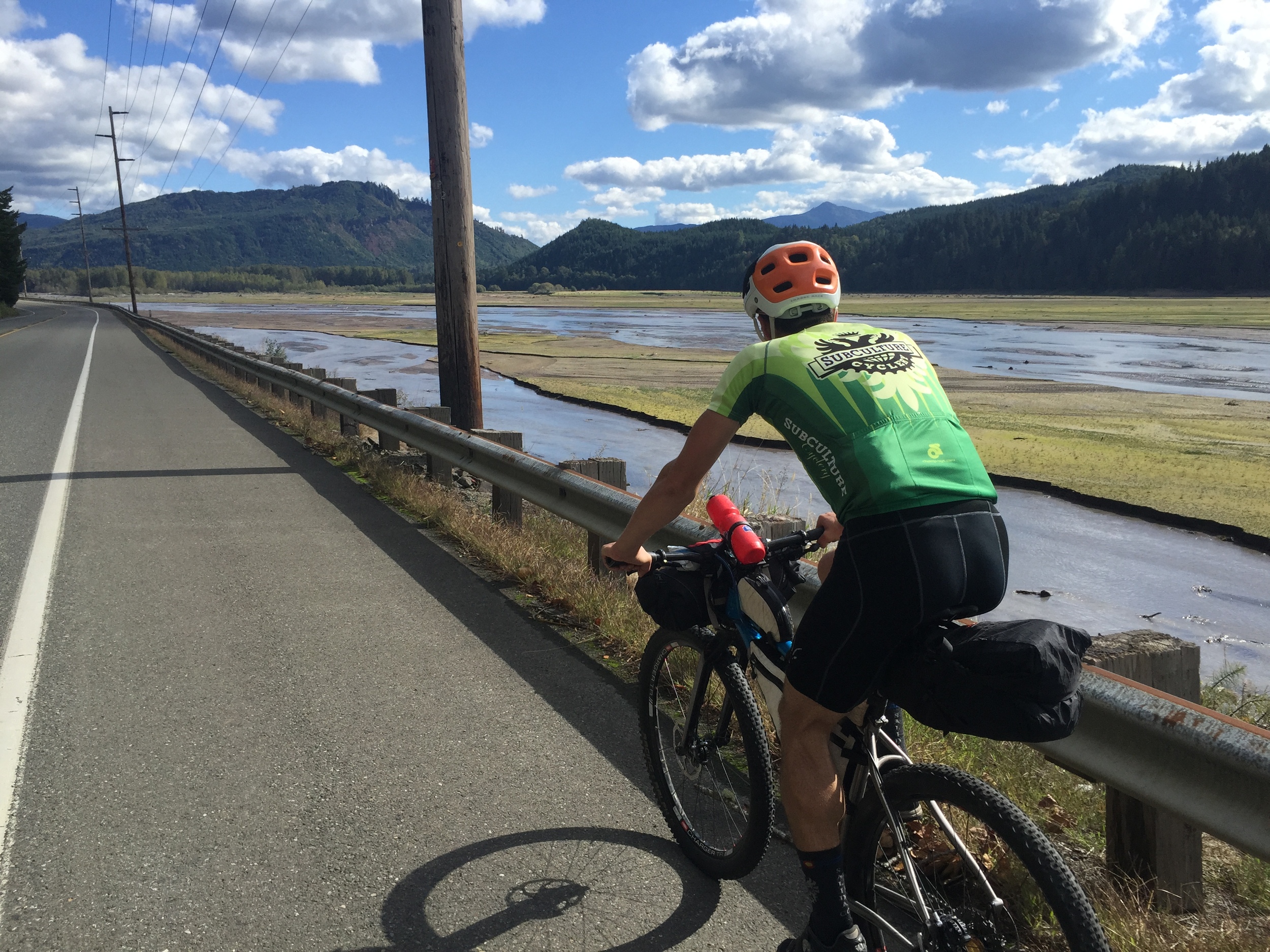
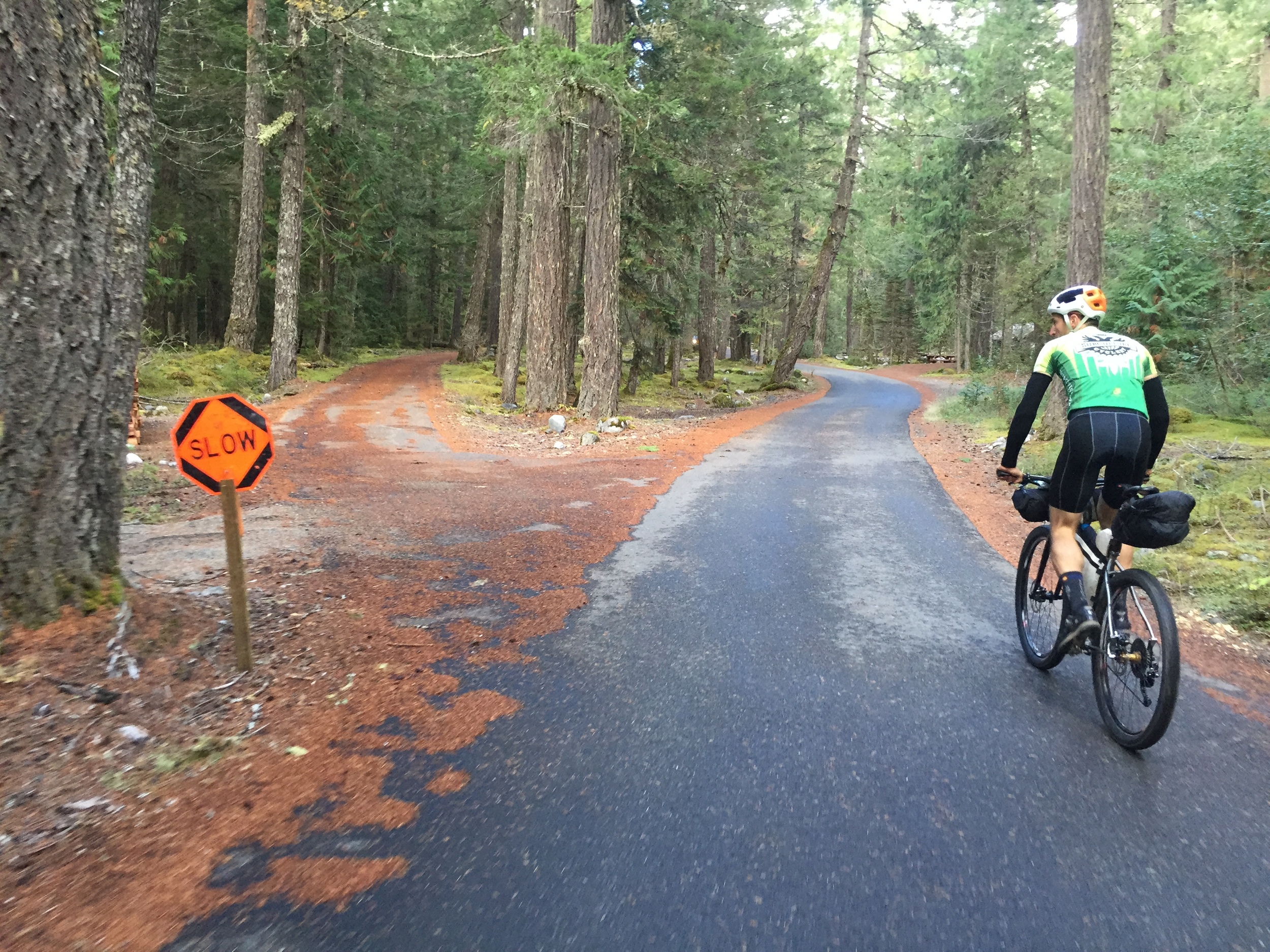
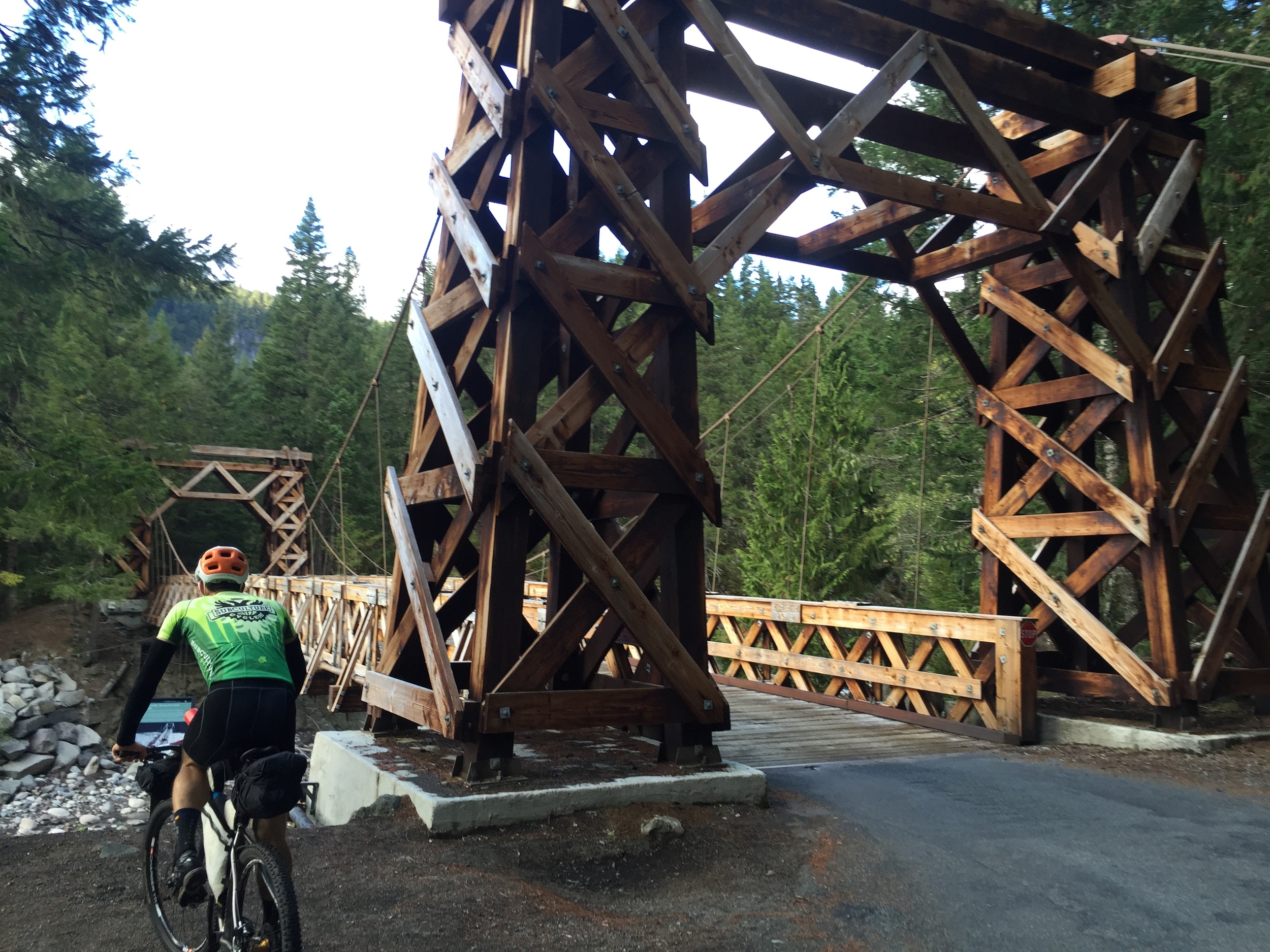
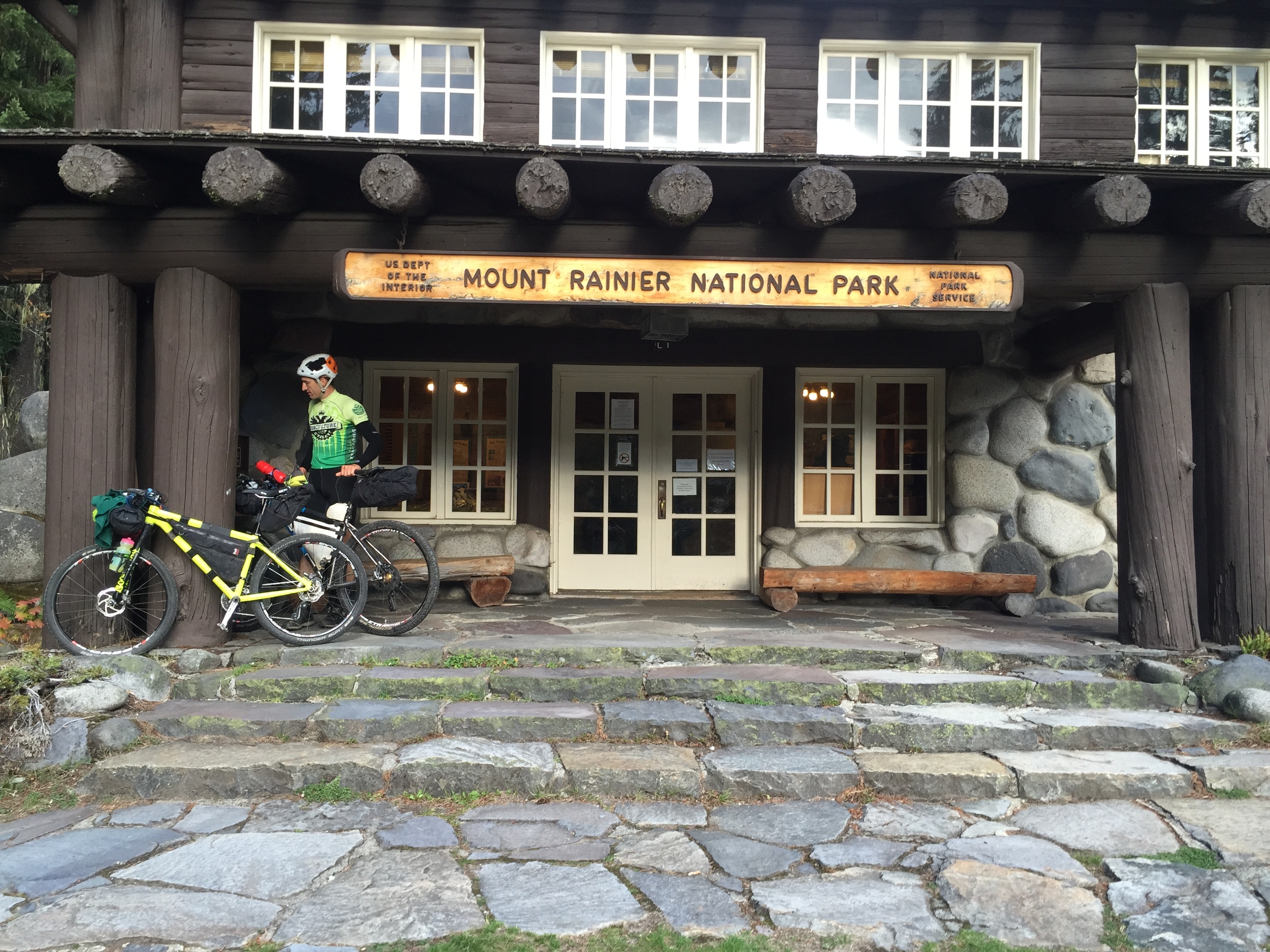
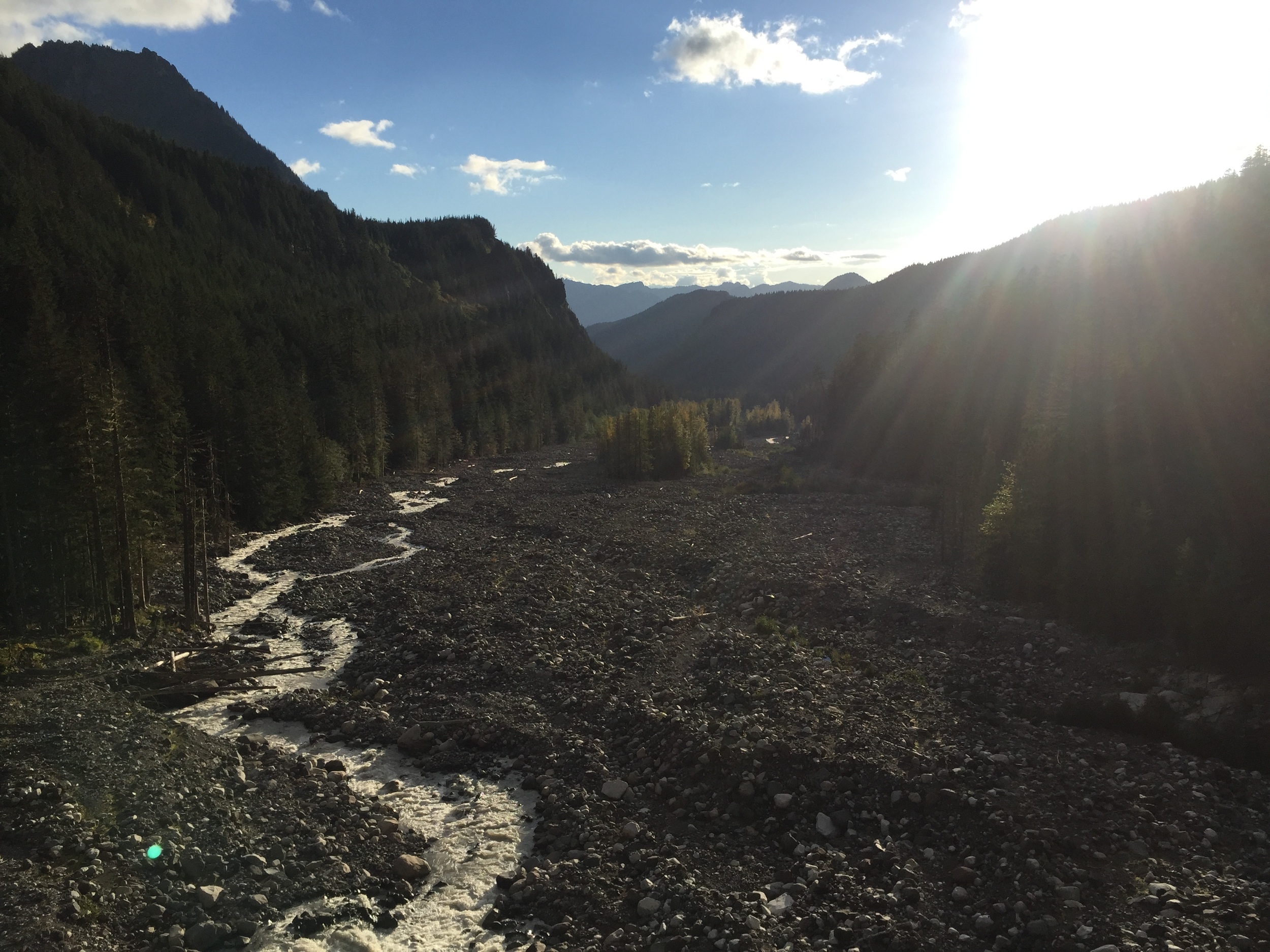
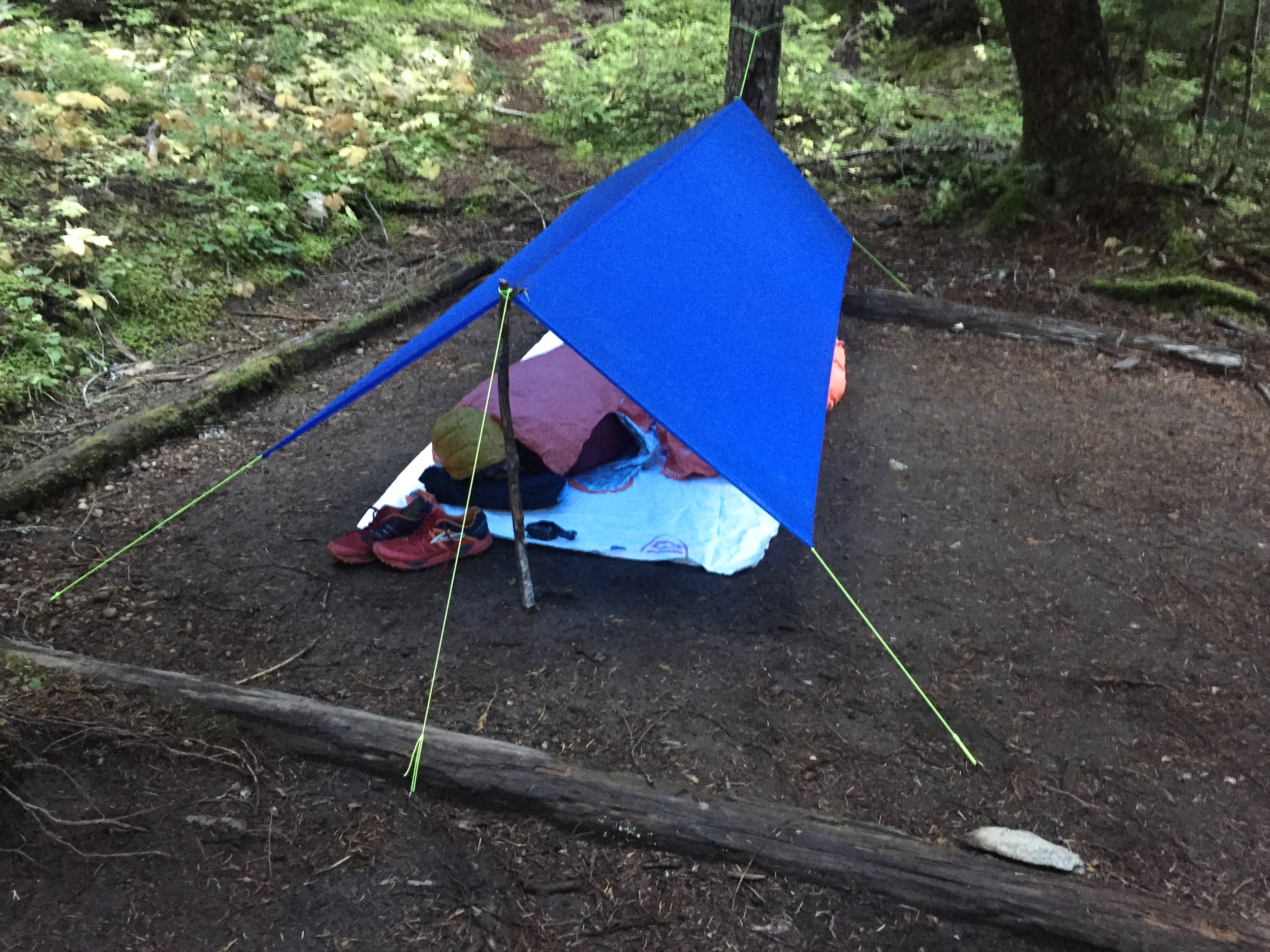

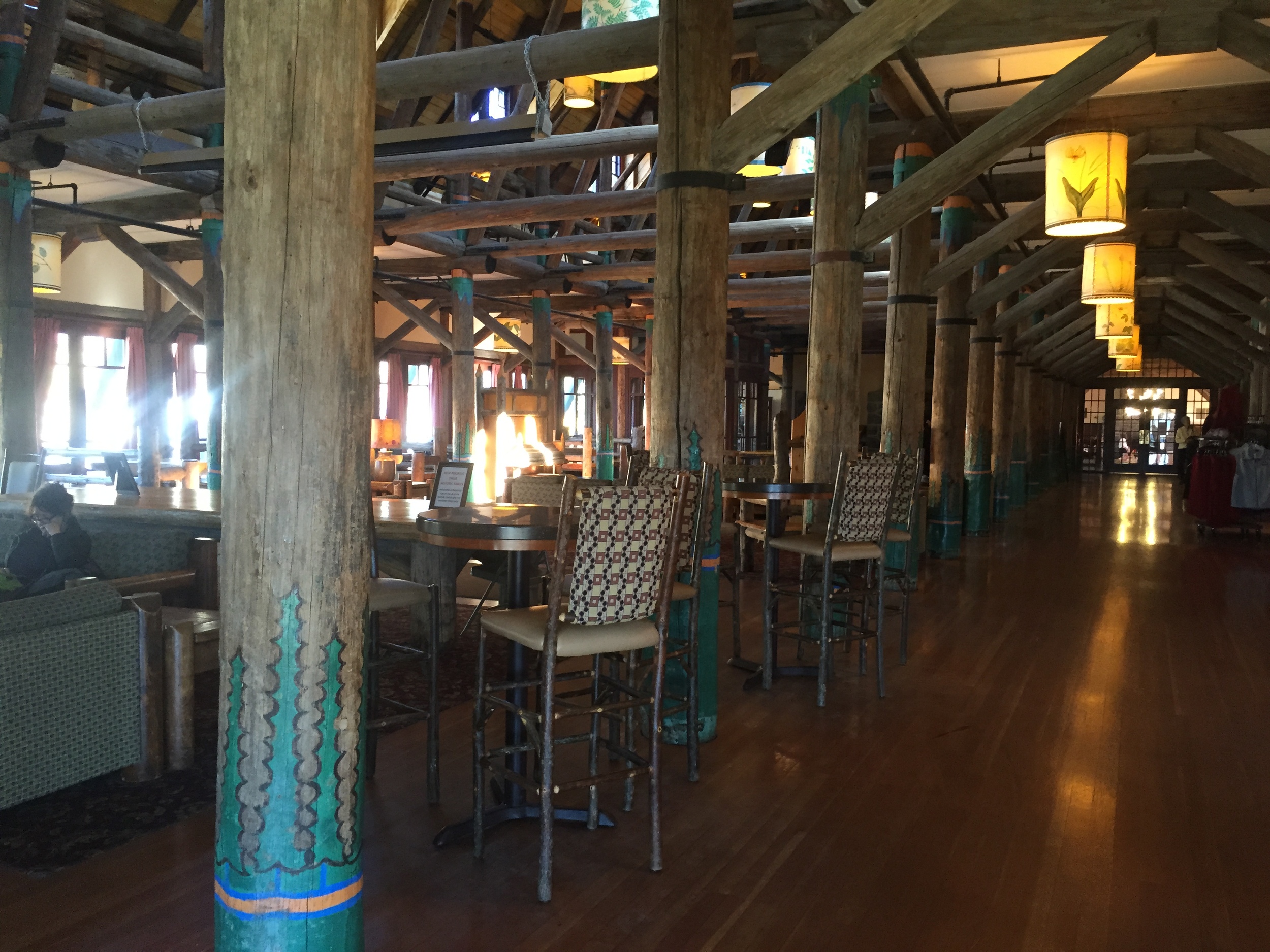
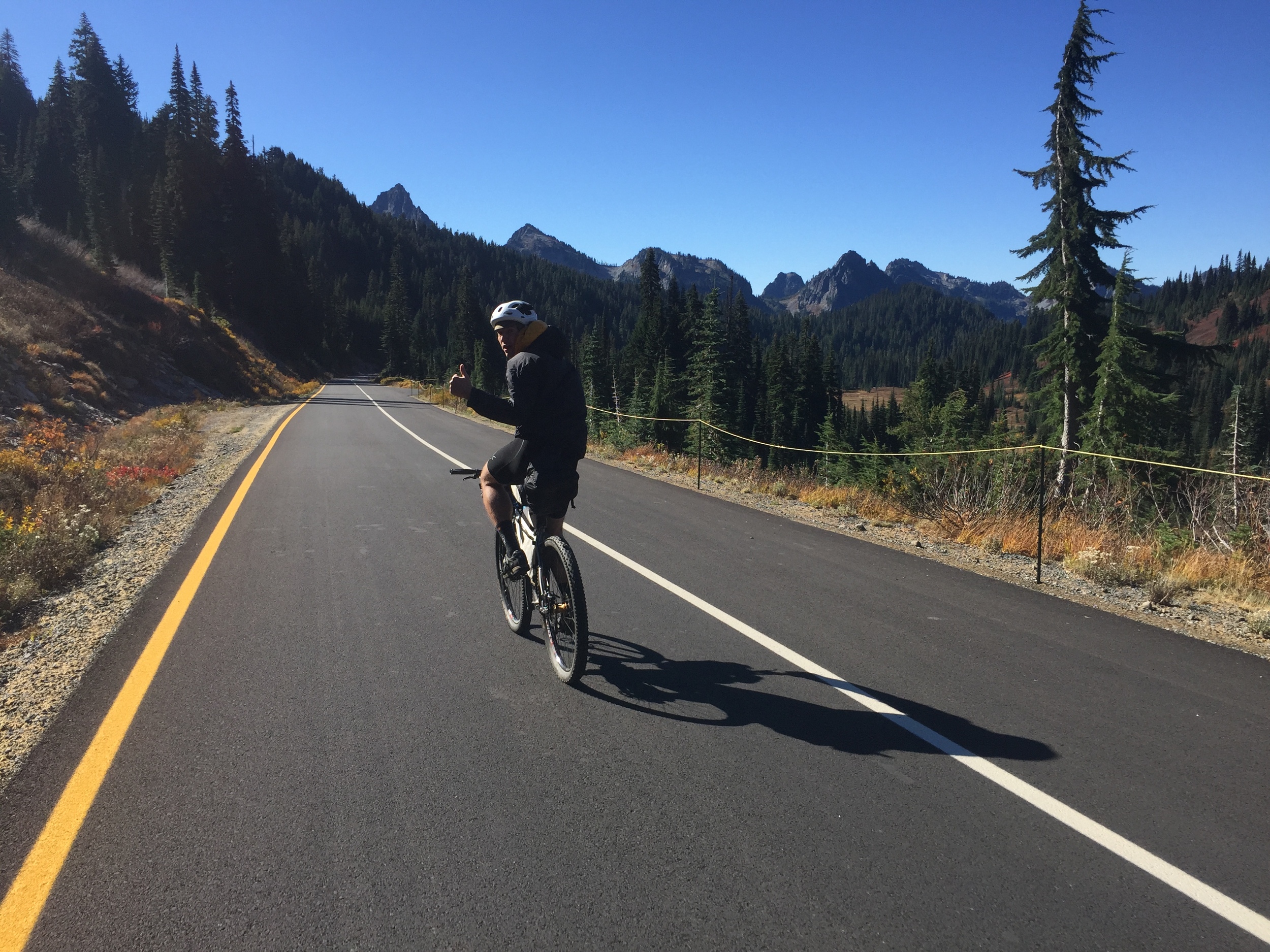
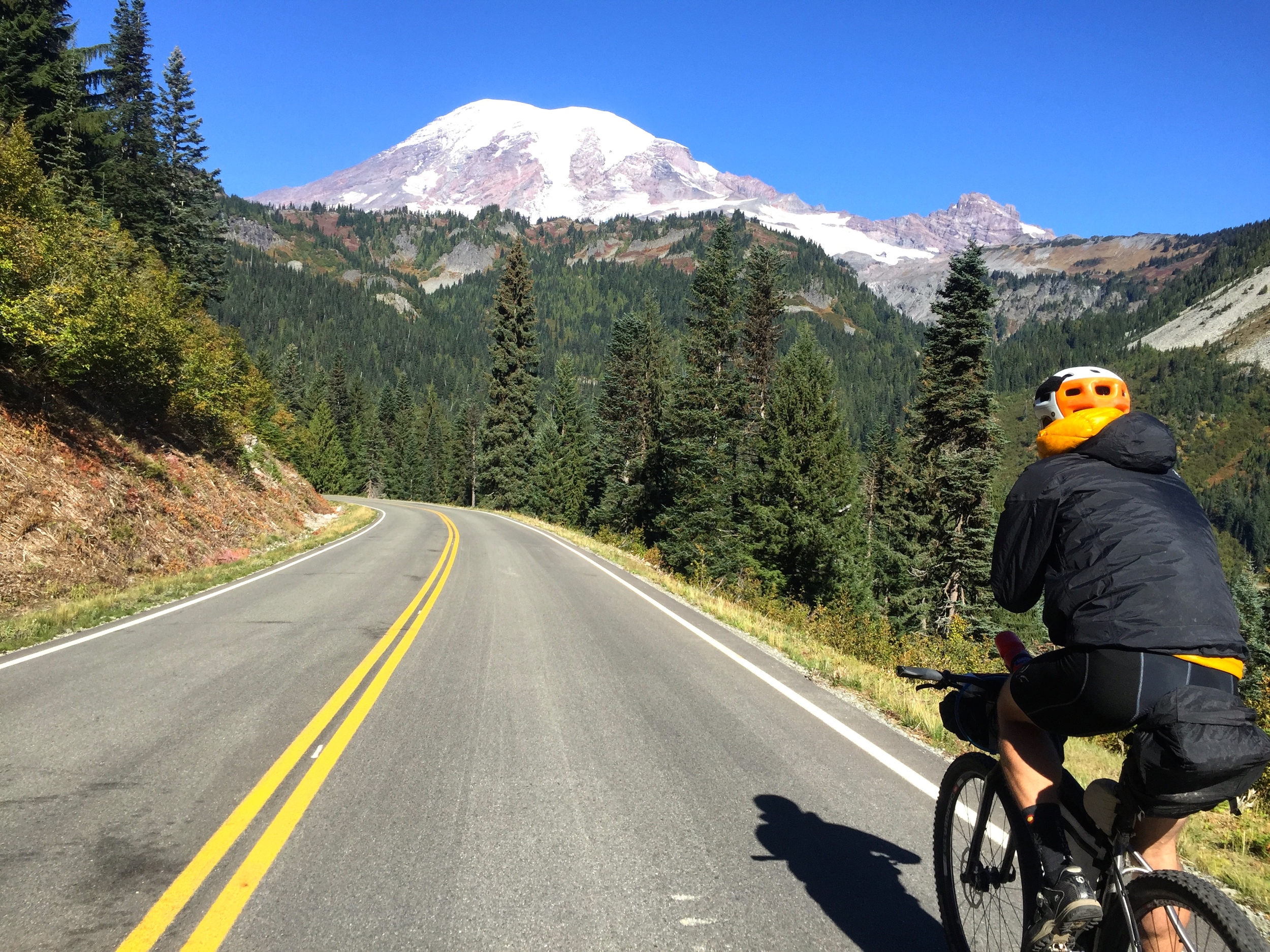
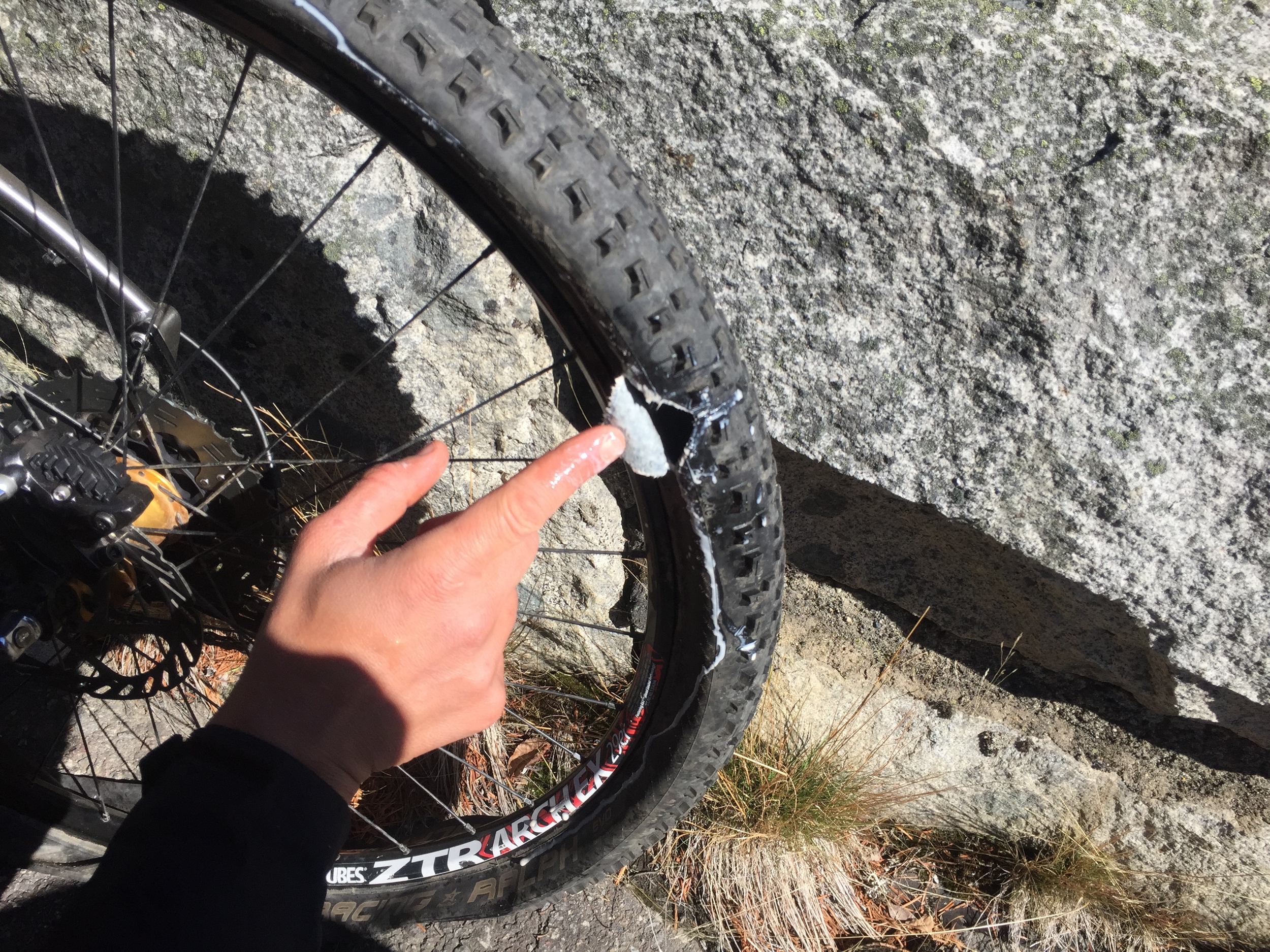
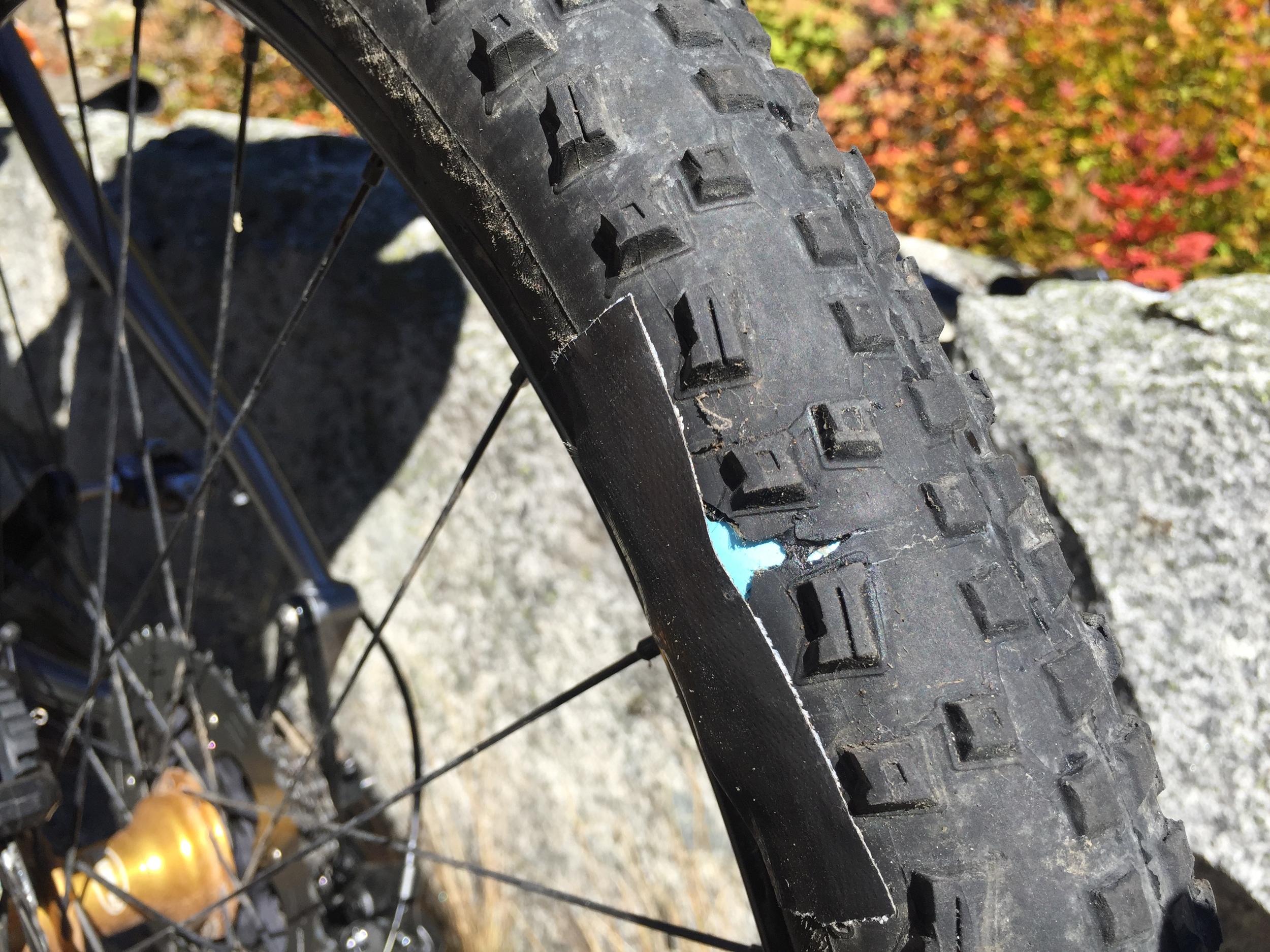
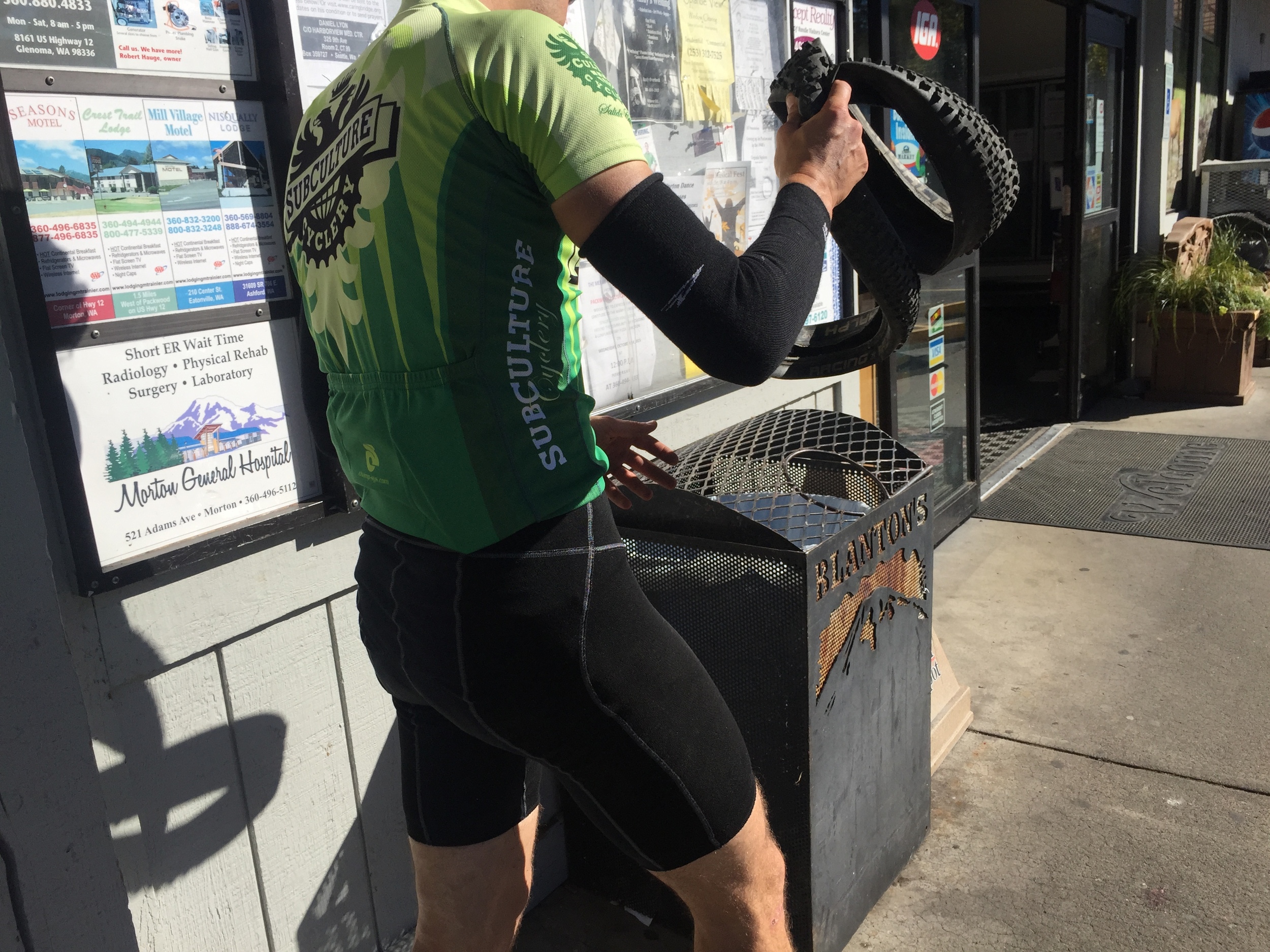
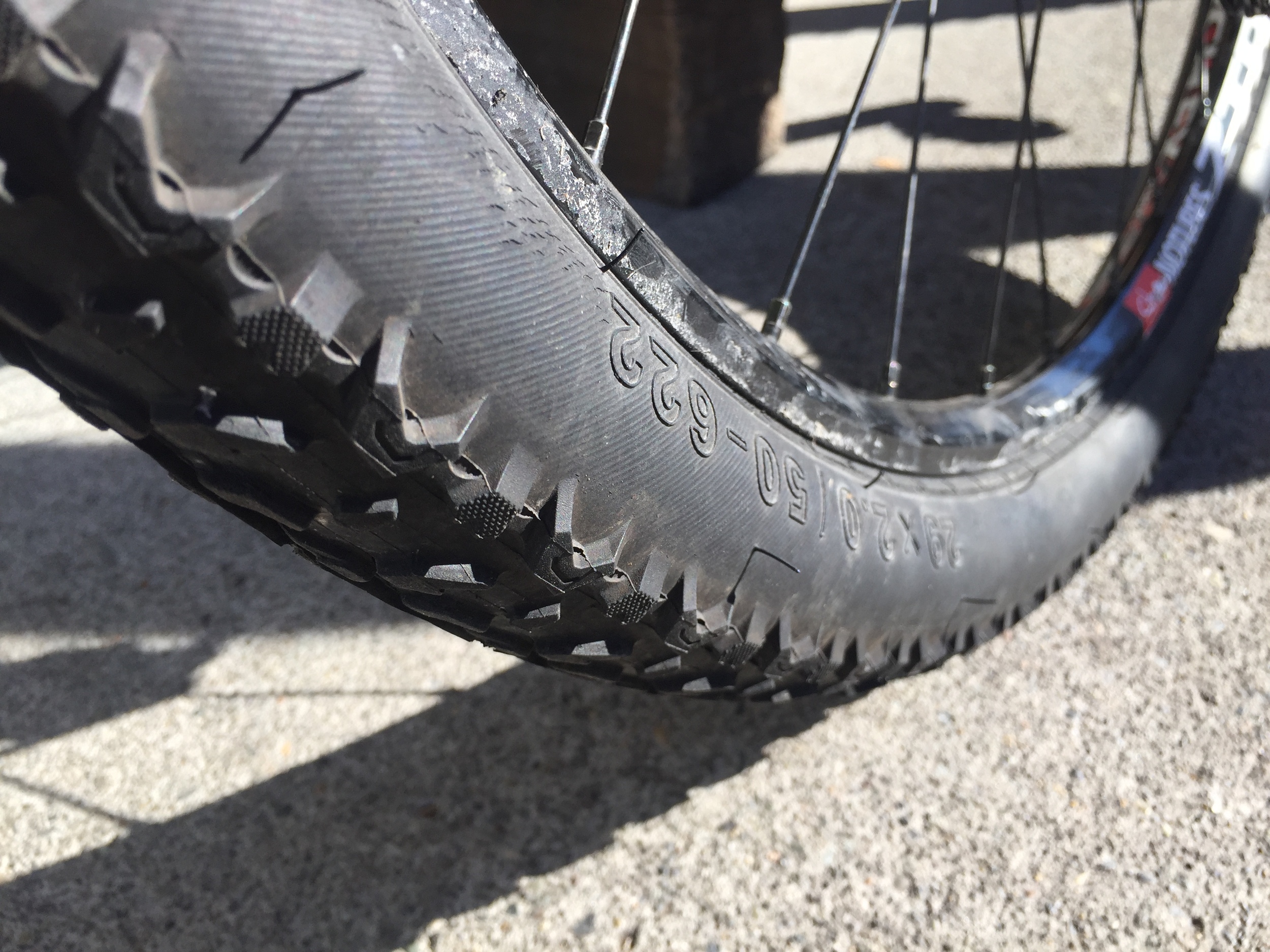
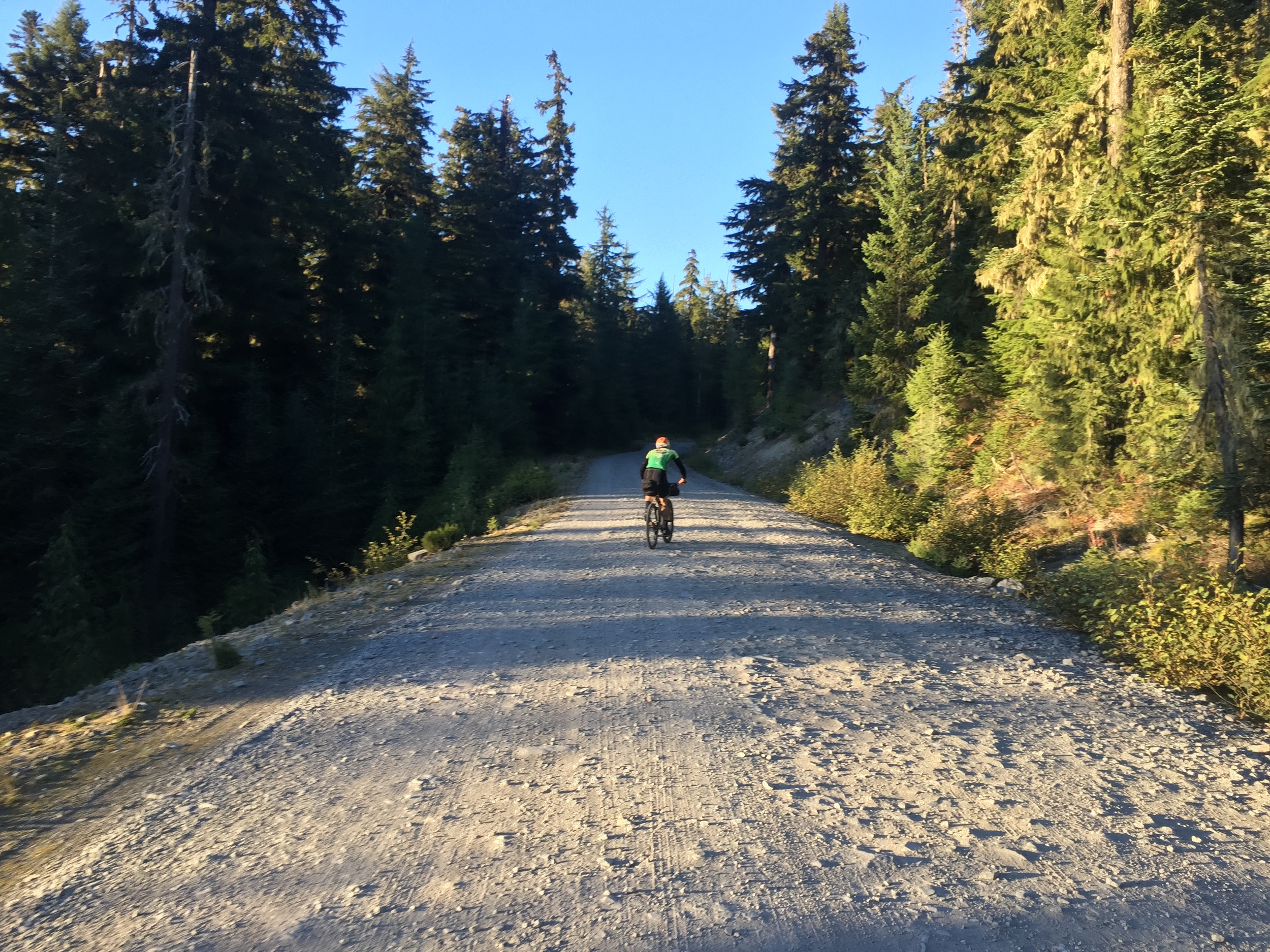
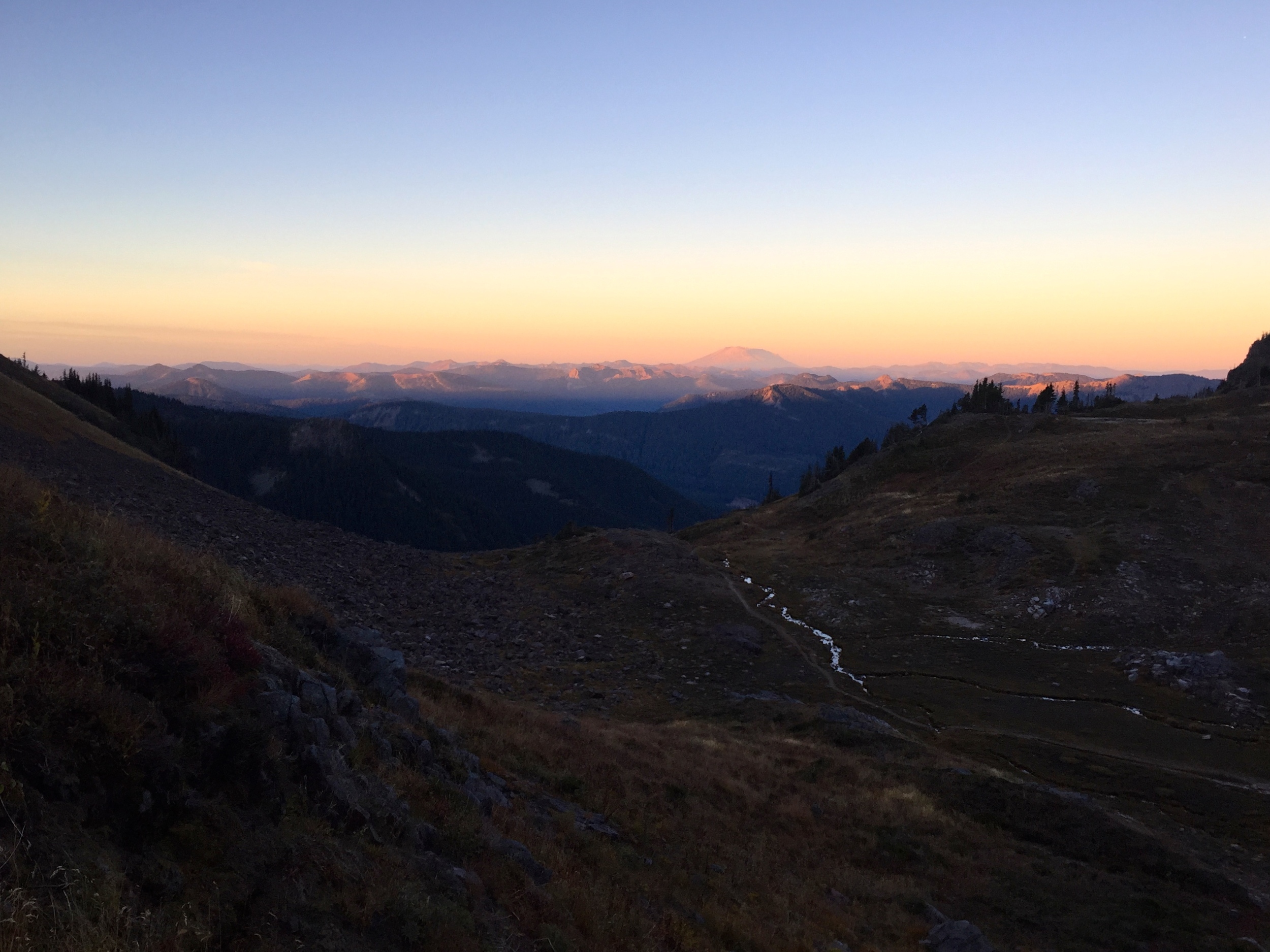
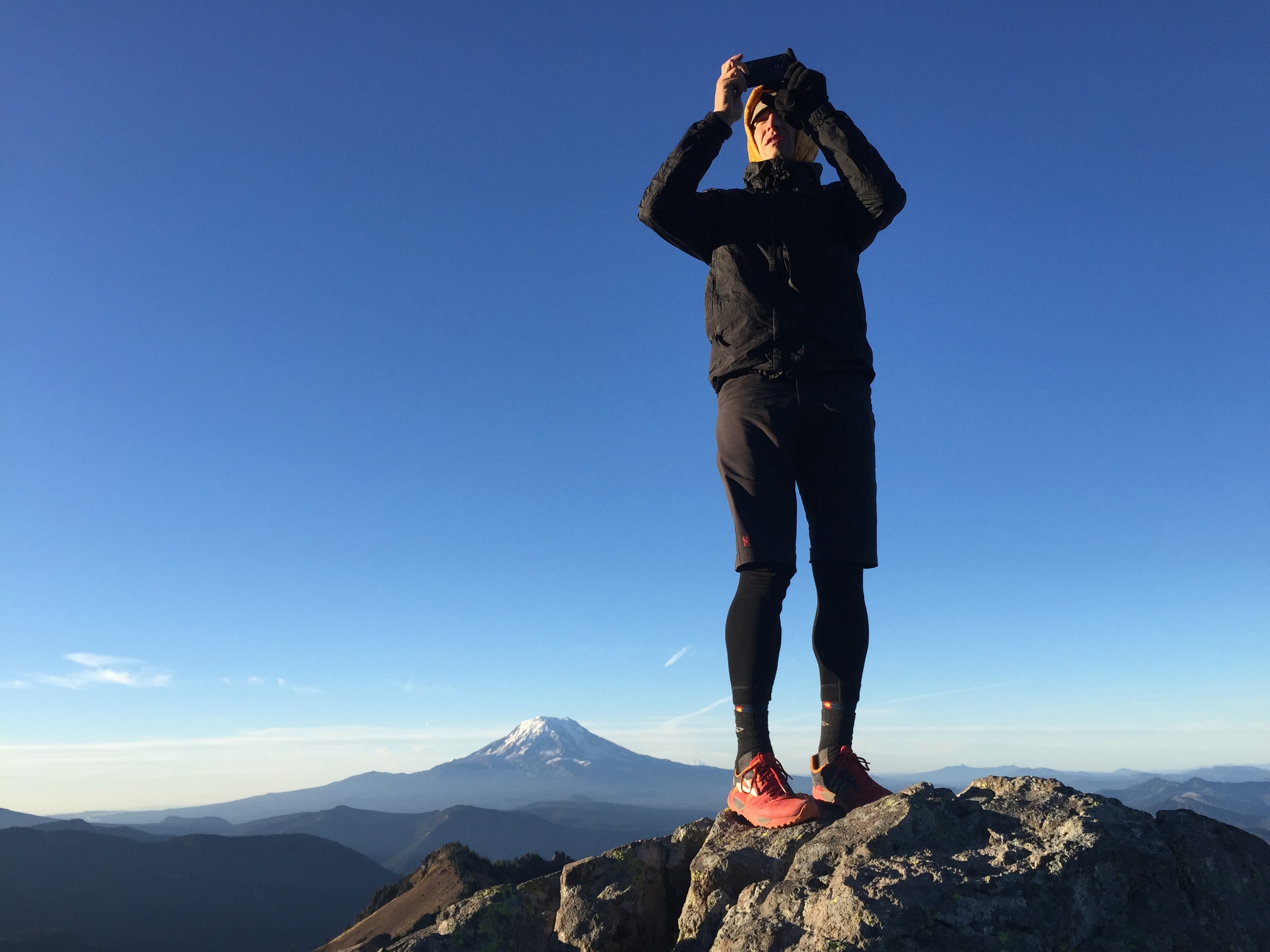


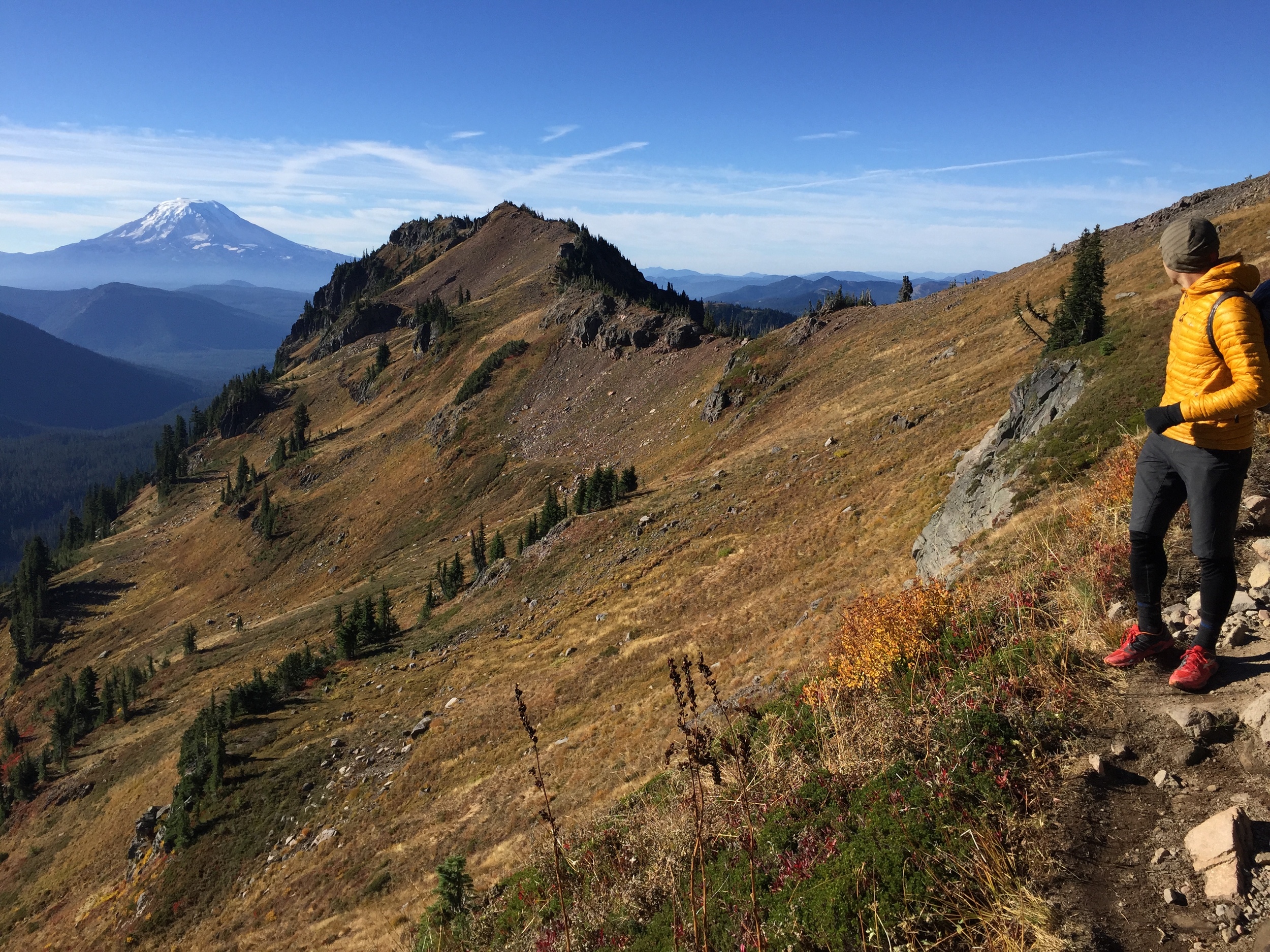
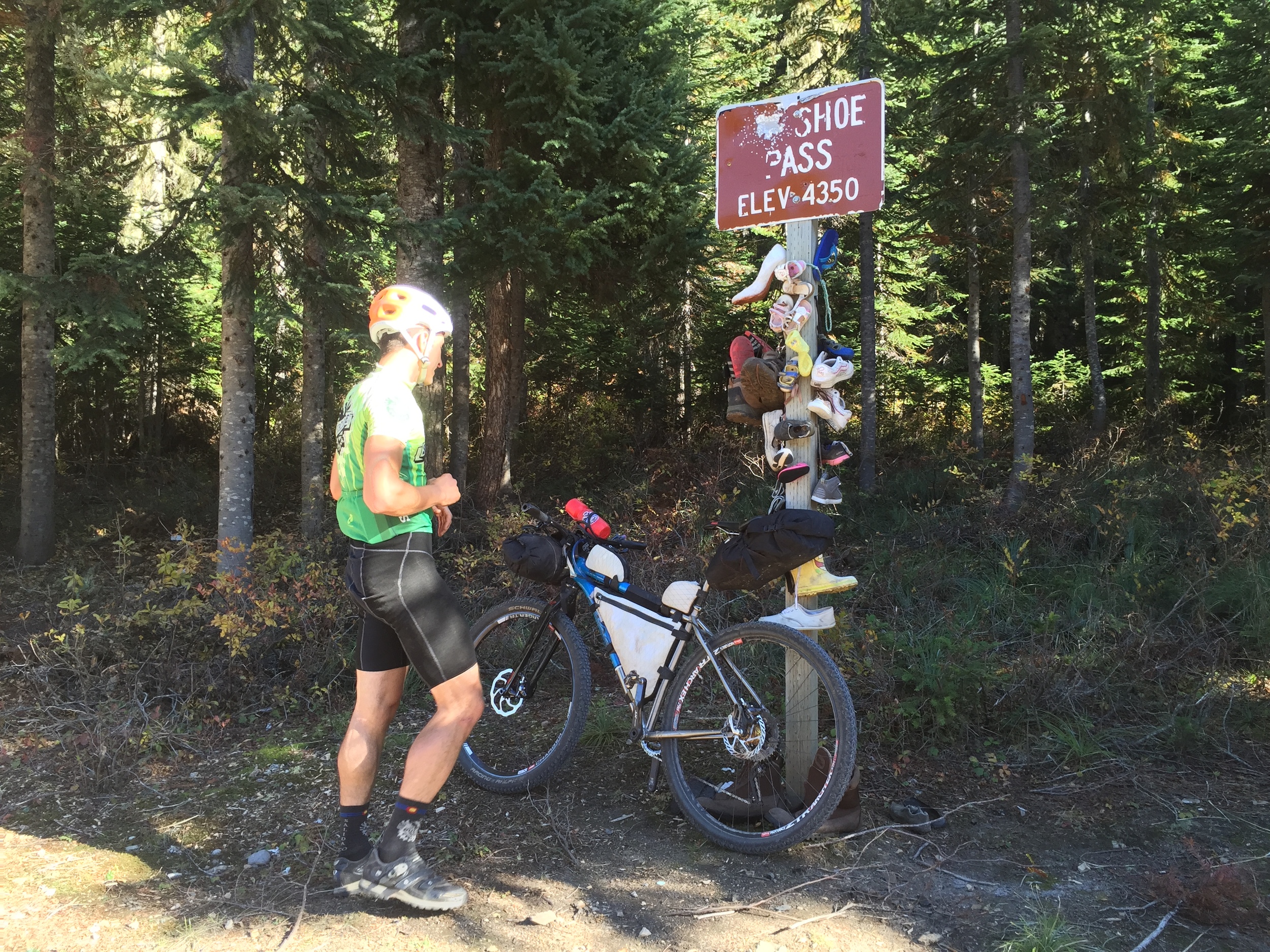
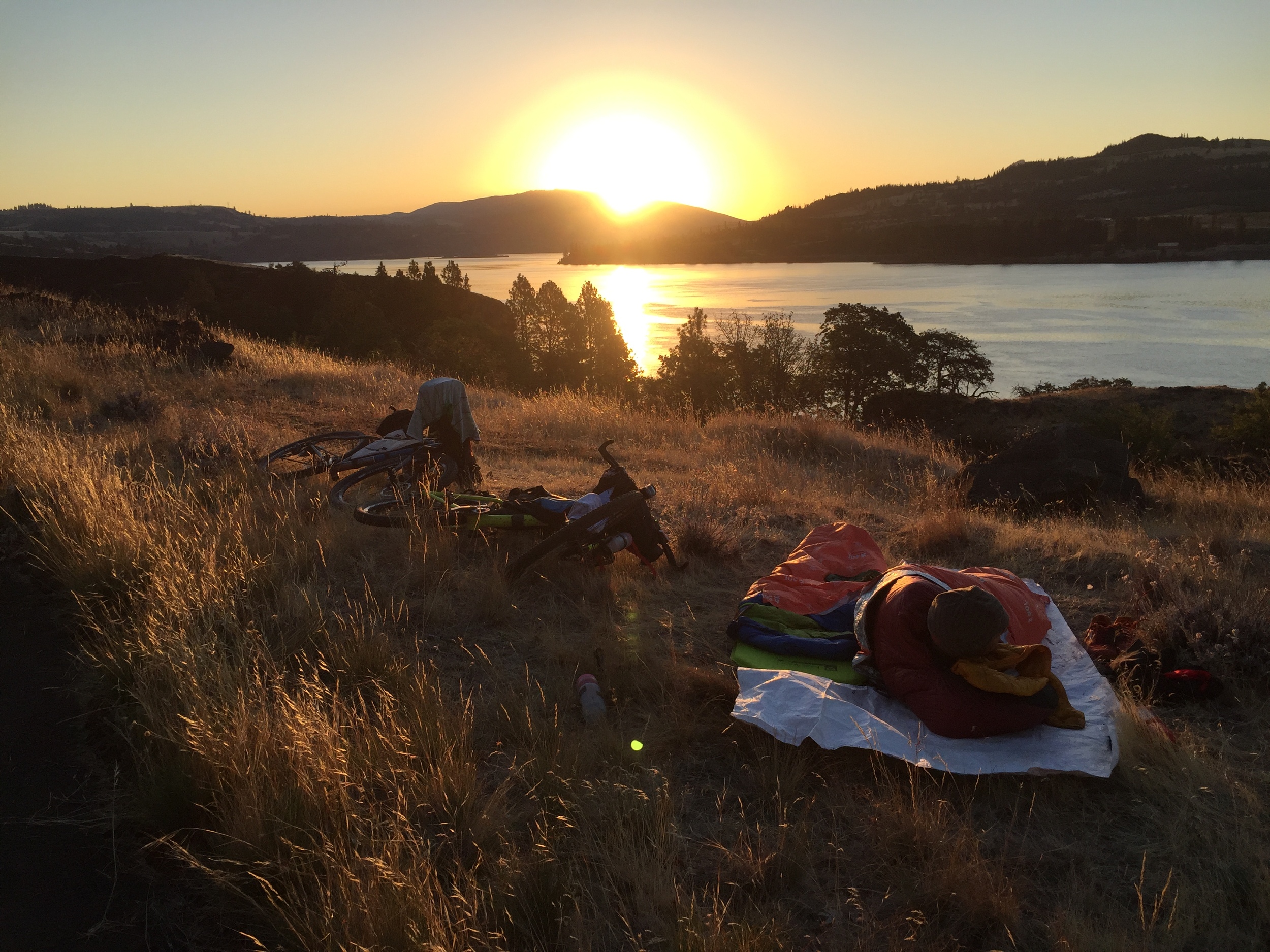
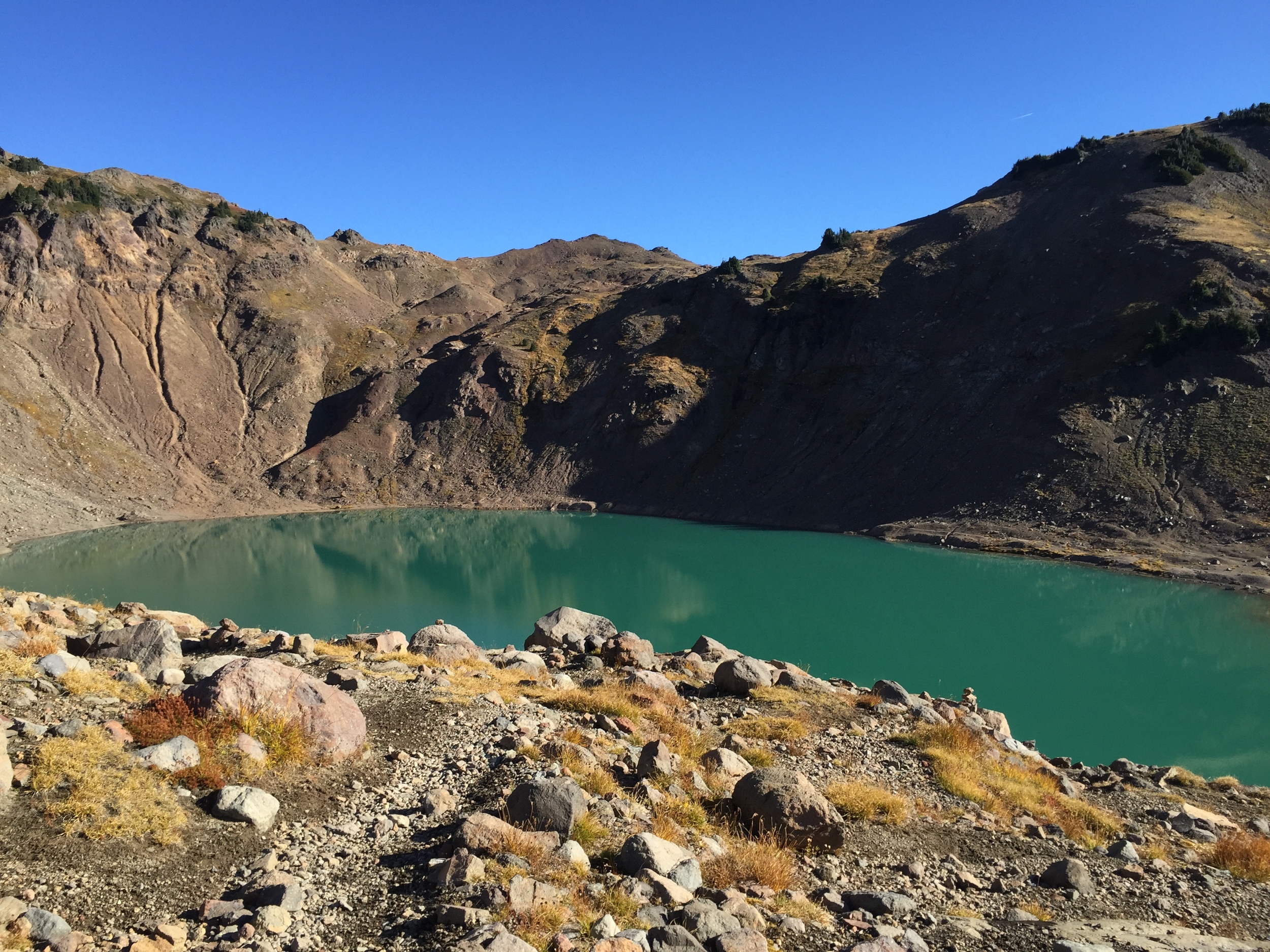
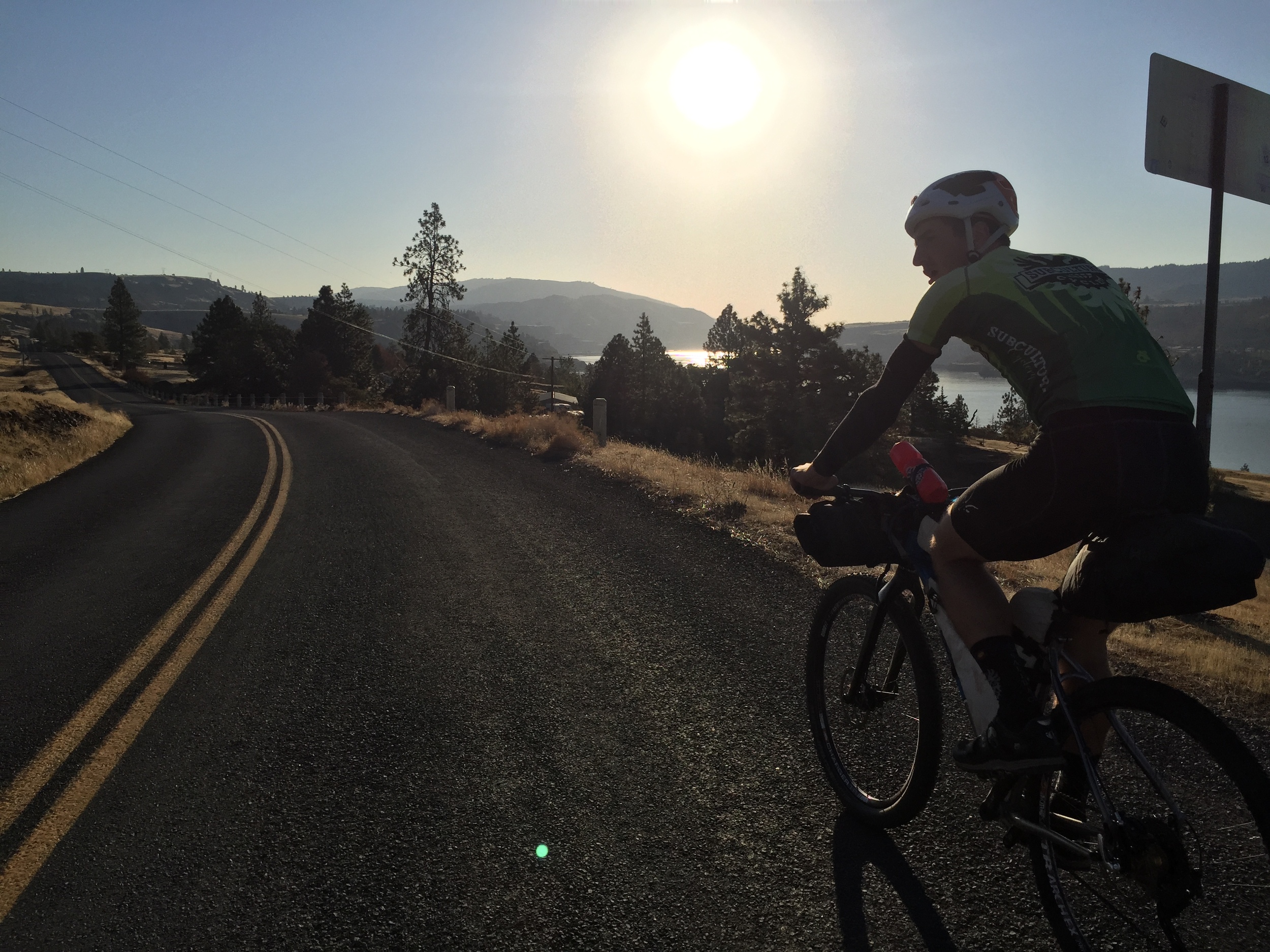
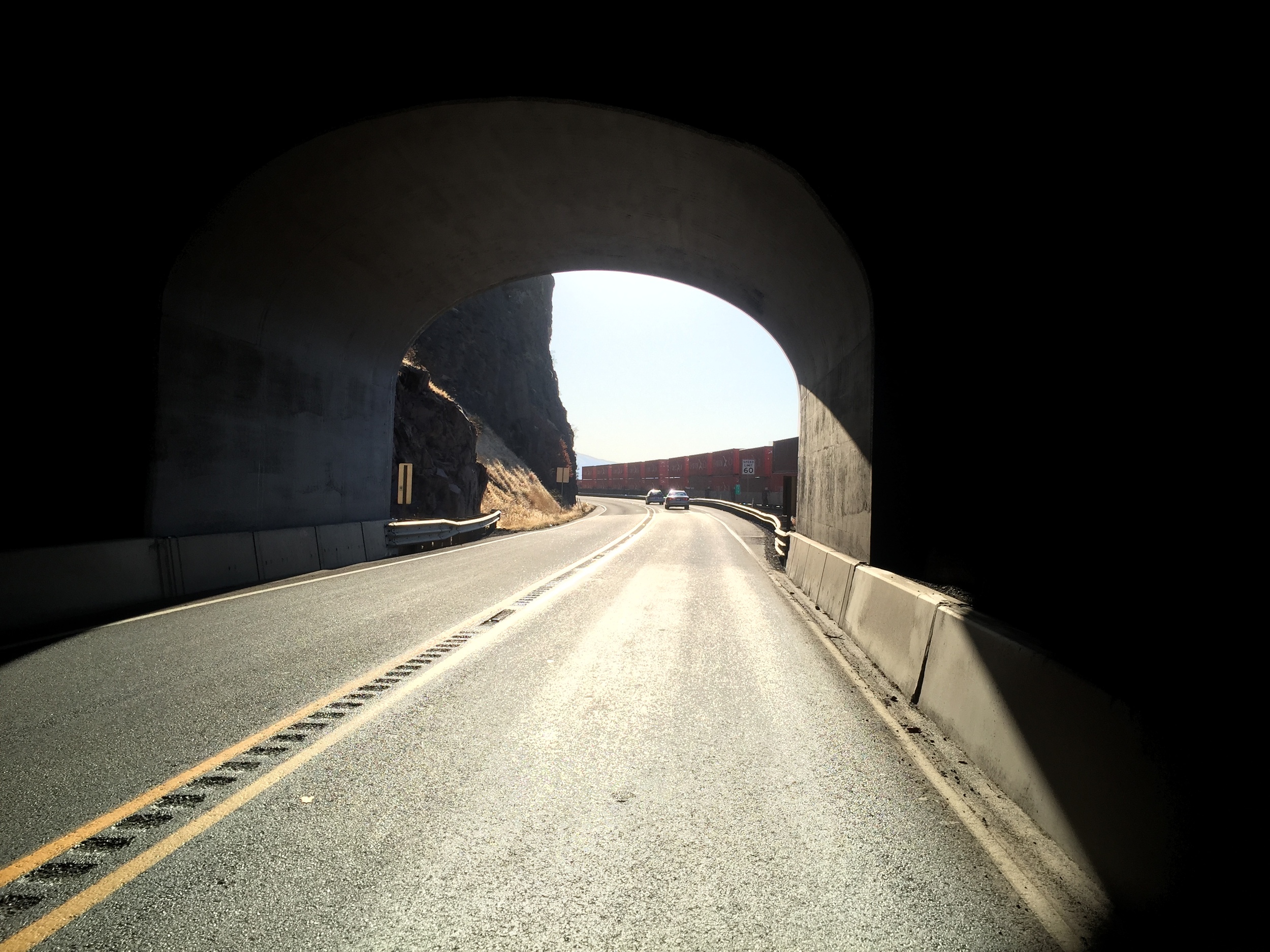



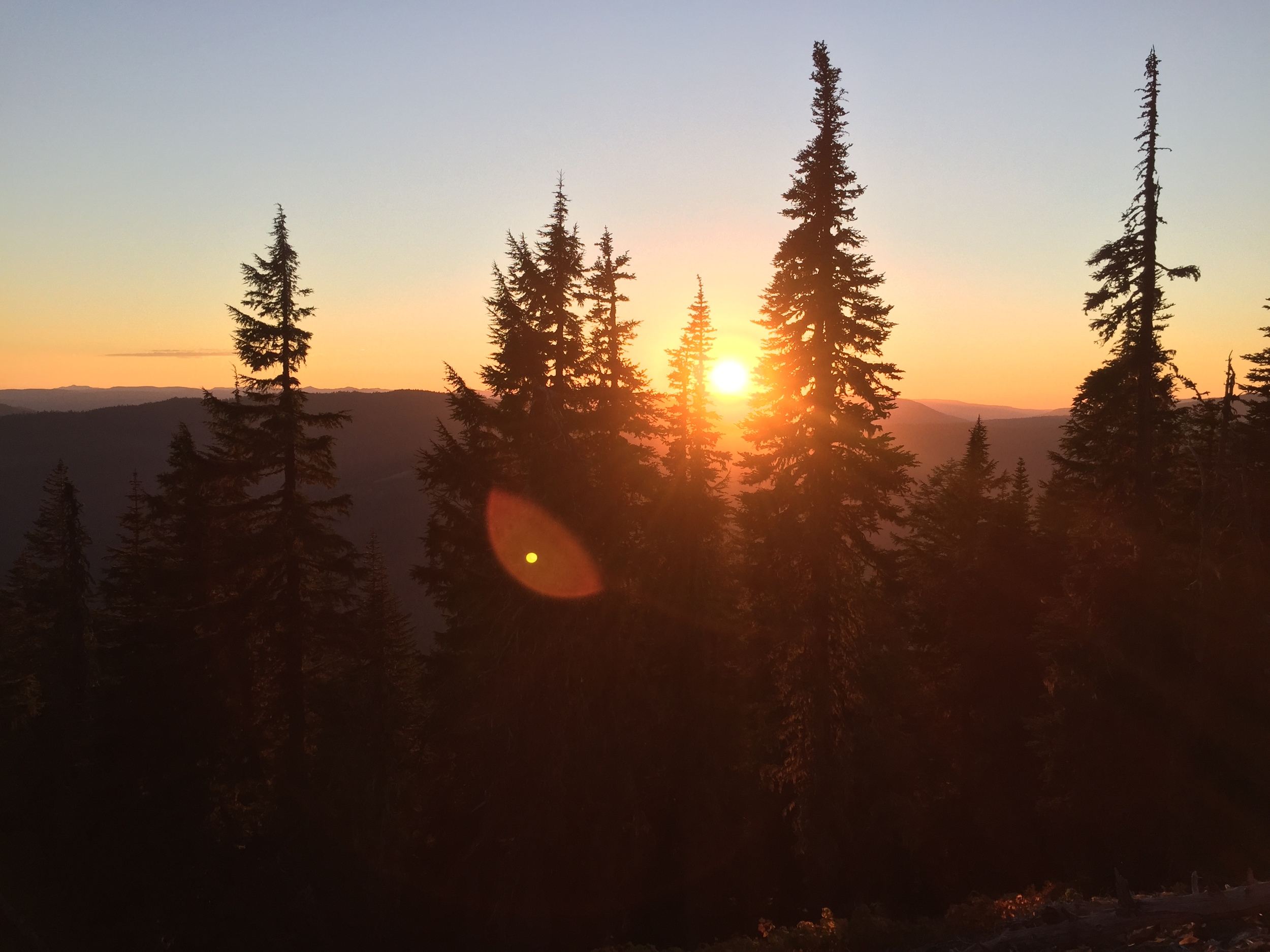
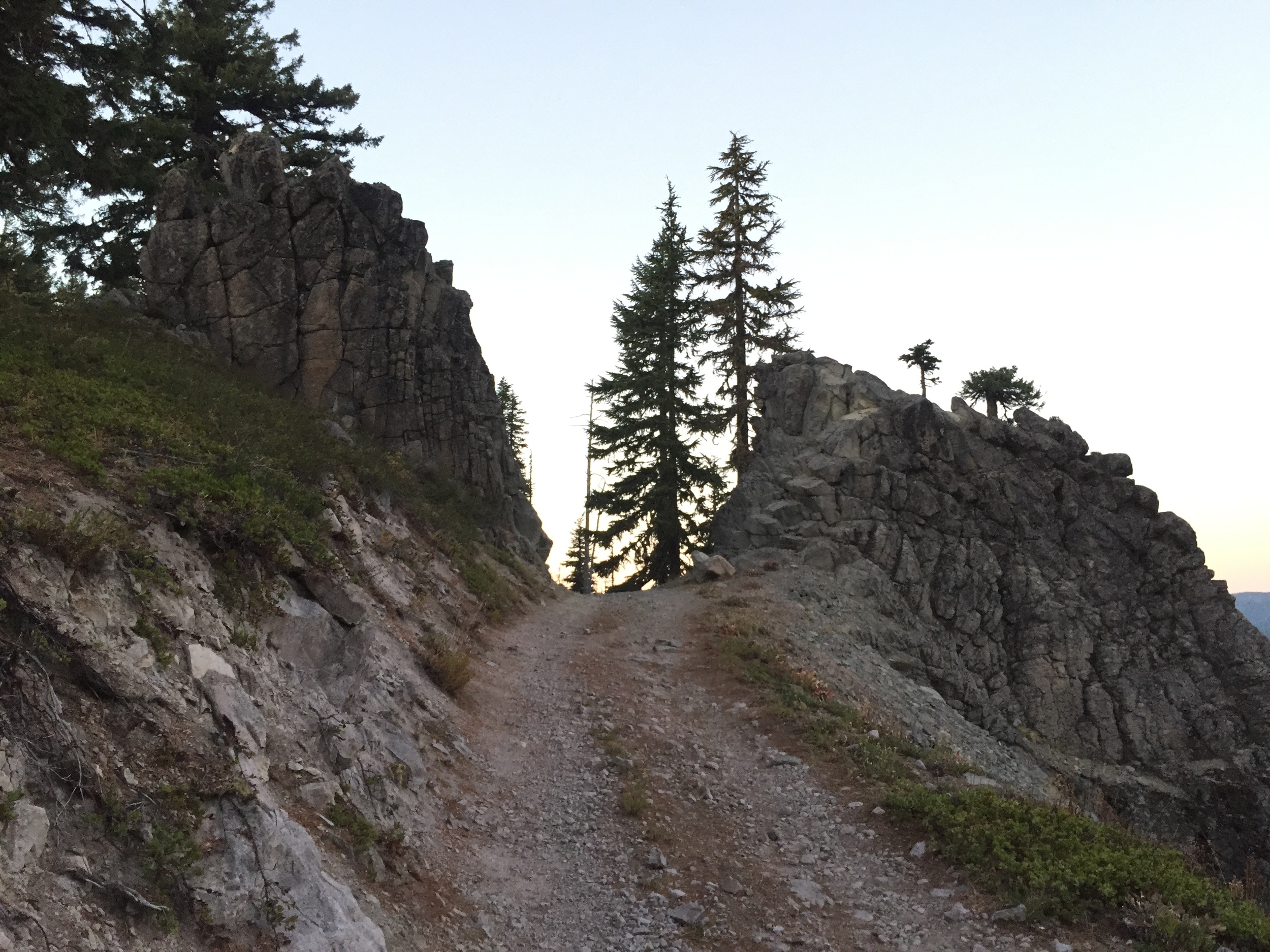
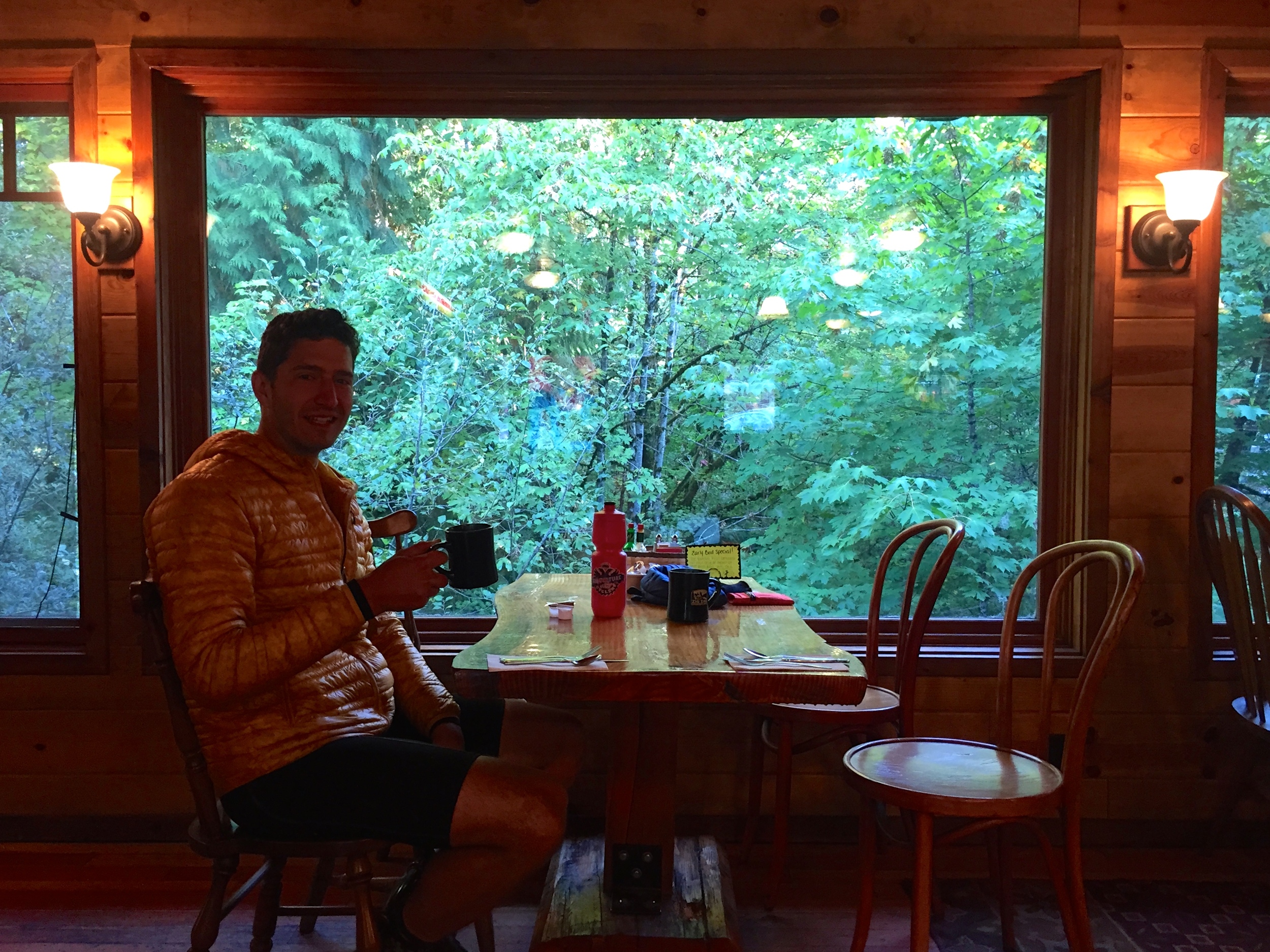
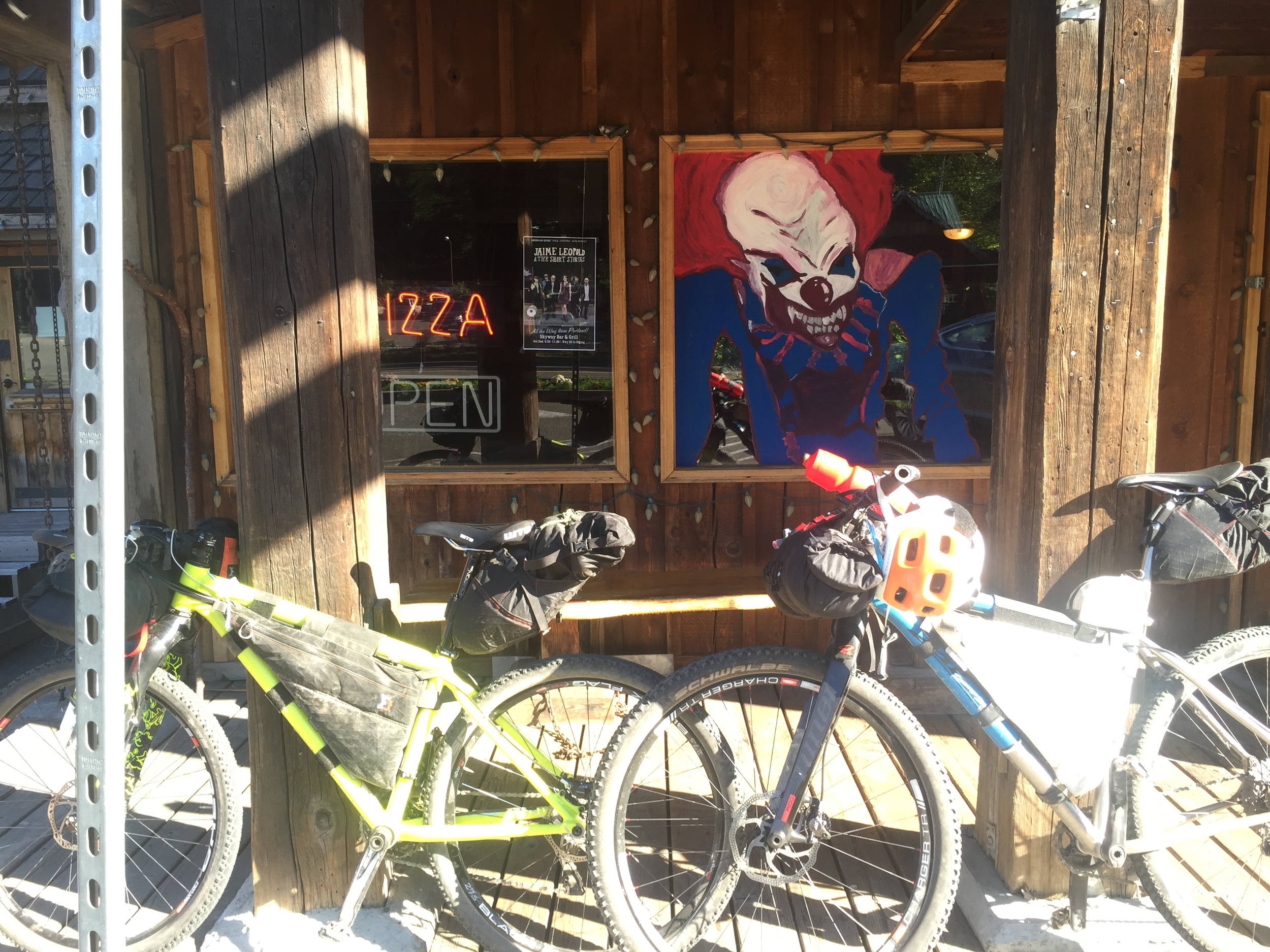
click to scroll through image gallery
Riding back toward Portland after five days of touring dirt roads and volcanoes from Rainier to Hood, the harsh reality of my life returned to my chest cavity with the guilt, the shame, the bad decisions. I'd quit my first agency job to take a job as a copywriter in the bike industry. It was clear that I'd made a bad move the day I arrived, but I did what anyone who isn't independently wealthy would do: I kept showing up--until they shit-canned me six weeks later. On the same day I was laid off, I texted the girl I was dating (it was on the rocks at this point) an ultimatum of sorts: "Will you please come over?" She wouldn't. We broke up instead.
I was unemployed, running out of money fast, single, no prospects, felt like a lowlife, was mad at the girl, was mad at the job, and I had to go back to this miserable reality. It was depressing. But if a bike tour wasn’t better than normal life, why the hell do a bike tour?
For four days, I had one job to do: go forward. It started every day at sunrise: wake up, make coffee, make oatmeal, clean the dishes, put on wet bike clothes, pack up, ride bike all day to get to camp by sundown, fail, ride into the night, set up camp, cook, eat, go to sleep. It was straightforward — always difficult, but always possible. It was perfect.
Sometimes I think about human existence before civilization, specialization, and money. Get up and forage all day. This is bike touring.
The funny part about this particular tour is that my purpose-filled days were 100% contrived — I made the route myself to max out the time I could get off work (I planned the trip before I was laid off). We intentionally added a hike into Goat Rocks and an extension around Mount Hood to fill up the five days.
But enough about my existential dilemma, let’s get to the route!
I envisioned riding some mythical jeep road along the spine of the Cascades. That doesn’t really exist, though, so we wound up copying a trail blazed by the Seattle rando boyz (blog here). We added an out-and back hike into Goat Rocks Wilderness and a long route around Mount Hood — stringing together just about every badass road I knew from the Dalles Watershed to Portland. It was roughly 400 miles with 26,000 feet of climbing, plus another 14 or 15 miles of hiking.
Day 1: Where the Recreational Path Ends
I was riding with my good friend, former roommate, and superhuman physical specimen Dan Lionberg. Dan lives in Fort Collins, CO.
Another friend of ours, Nicole Swan, recently moved from Fort Collins to Seattle, and she let us crash on her floor in Capitol Hill.
Our big goal for day 1 was to get to the Mount Rainier National Park ranger station in Packwood, 101 miles away. The ranger station would be able to issue us an official, National Park-approved camping spot (hopefully), and they closed at 5 P.M. We’d pretty much take whatever we could get as we’d read from the aforementioned blog that the rangers didn’t take kindly to campsite poaching.
In spite of our time constraints, I demanded that we go out for coffee and pastries before we left Seattle, so we walked to Stumptown at 7 a.m. with Nicole. We slammed a cup, then went back and put on our spandy-pants. As usual, we didn’t get moving until 9 A.M. 8 hours to get 101 miles..
After the first scenic miles around Lake Washington, we followed roughly the Southbound train tracks on a series of suburban and exurban commuter paths. Some woman came flying out of a strip mall parking lot on one stretch of suburban parkway and almost ran into Dan, then she honked at him as she rode his ass. I pegged her back windshield with a banana peel and she sped away. Always carry a banana peel while riding the Seattle suburbs.
After almost 50 miles and several hours, we made it to actual backroads, leaving the trail at Orting for some proper country roads as Mount Rainier dominated our view to the southeast. We stopped in Kapowsin to eat our favored trail food of summer sausage and cheddar cheese in tortillas, then we headed finally uphill and toward the mountain to start the second half of our day. We skipped the first hard part because a sign said “no outlet.” We assumed it went through since the rando boys did it, but we didn’t have time to take chances, so we went straight to the Nisqually River — its path leading a straight line to the top of Mount Rainier.
The river was hardly uphill, but this represented the beginning of our 5,000-ft climb to Paradise Lodge. I decided we were on-schedule to make it to Packwood by 5, so I advised that we stop to slam some coffee at Ashford, before we crossed the river and rode through the woods for the last 14 miles to the ranger’s station. Our stop, of course, took longer than anticipated, and we found ourselves under the gun to slam the last 14 miles in barely over an hour. I rode in my favored bikepacking aero position, then sat on Dan’s wheel as he pulled us upward. We saw that there was some perfectly good camping just before the national park if we needed it — but we didn’t plan to backtrack. We rode through an interesting ranger campground before crossing a cool wooden bridge into Longmire and its small village of wooden ranger station buildings (including a library). We made it to the ranger station with ten minutes to spare!
It turned out that getting a campsite was pretty easy and our backup plan of riding all the way through the national park at night was unnecessary. We were issued a site on the Wonderland Trail, 0.9 mi from the road. We climbed another 2,000 feet — almost reaching the Paradise loop, before arriving at our trailhead, changing in its warming hut, and hiding our bikes behind an ancillary service building. We packed all our camping gear into our tiny Hyperlite cuben fiber backpacks and hit the trail for our descent down to our campsite by the creek.
Our tiny, makeshift tarp pitched up better than either of us imagined it would, and we enjoyed a decent night of sleep under a cloudy, dewy, near-freezing sky.
Day 2: Two Tickets to Paradise
Day two was going to be easy, I kept telling myself and Dan. We only had to ride 57 miles, and the first 40 were mostly-downhill on paved roads. Getting up/making food and coffee/packing up/hiking out/changing into bike clothes/repacking everything was the first problem. I don’t think we got on our bikes until almost 10 a.m. So much for getting to Paradise at sunrise…
We made it to the top pretty quickly, though — early enough for the deck to be frosted over and brunch to be 40 minutes from starting.
The Paradise lodge is cool. Whether or not it’s cooler than Timberline on Mount Hood is up for debate, but it’s 100% worth going to and definitely has that “National Park-y,” “I drove across America to see this” vibe. And that’s saying nothing of the mountain on whose flank the lodge sits. Mount Rainier is so big, so imposing, and so majestic that it’s almost ridiculous! We were very happy we got a campsite and didn’t have to ride by this crucial American volcano at night.
We put on our puffy coats and gloves and started the long, scenic ride back down to the low country — pulling out our phones hundreds of times to take pictures.
Stevens Canyon Road offered some of the best views of Rainier as it switchbacked straight at the mountain, then gave a sweeping view of the rolling foothills below as it switched back away from the mountain. We were descending at 25 mph or so when Dan’s tire popped at full volume — immediately deflated. We stopped and looked. Oh shit. His sidewall blew out in a 1” triangle! There wasn’t a chance in hell we could fix it.
We decided we’d try to put a tube in and boot it with all the trash we had and some Gorilla Tape. The tuna fish packet offered some nice stiffness, so we tentatively pumped the tire to about 15psi, theorized about whether adding more pressure would help the tire resist twisting forces or just poke the boot straight through, and ultimately put Dan on the bike and slowly thwump-thwump-thwump-thwumped our way down the canyon.
We resisted saying anything like, “it’s totally working!” as we knew we’d jynx ourselves and it would immediately pop, but it was totally working! Somehow the hilarious lump on the side of Dan’s tire was going in circles and riding him down the mountain. I tried to keep our speed to about 20 mph, but after a few minutes, we were riding 24 mph down the long descent toward the Cowlitz River and Packwood.
Dan’s tire flatted again just as we pulled into Packwood after 20 miles of service above and beyond the call of duty.
We were in a classic 1000-ft-logging-town-belt Northwest town on Seahawks game day and we somehow needed to find a 29er tire. We went to a coffee shop with a somewhat cool sign — at least they would have coffee, if nothing else. The barista advised us to try the town’s main bar, the Blue Spruce Saloon, as the bar was where the sporting goods store’s owner has his mail forwarded. The sporting goods store was closed Sundays. We ordered burgers at the bar and struck up a conversation with a couple local barflies — one named Mushroom Johnny and another who’d “hadn’t had a drink in ten years.” (he also told us later that he left Yakima because he was smoking crack) These two offered to sell us a tire off their Huffy out front, but it was a 26er.
“What size do you need?” Mushroom Johnny asked. “29er,” he repeated. “29er.”
Our friend from Yakima gave us some encouragement as we left the bar. “I don’t know where you’re going or if it’s gonna work out, but you’re on the right path. I can tell.”
We went across the street to the grocery store, figuring we’d eventually make it out of town somehow, so we’d better get our supplies ready. I was searching the grocery store for what seemed like half an hour before I finally asked someone where they kept the tortillas.
“They’re kinda hidden in the back corner.”
I picked up the cheapest ones I could find and walked by the deli to check out. I overheard a younger guy talking to his friend working the deli.
“I guess they’re riding across Washington. I don’t know. Mushroom Johnny told me about them. I gave them my tire.”
“YOU GAVE US YOUR TIRE?!” I interrupted.
“Yeah, guy outside.”
“OH MY GOD YOU’RE SAVING OUR ASS THANK YOU!!!!”
Dan was mounting up his new, dry-rotted, Walmart-bike 29er tire on the sidewalk out front when I left. He’d paid the man $40 for it.
The climb out of Packwood was about as hard as I imagined it would be: 3,600 feet of gravel updogging with multiple mini-descents and even steeper climbs throughout. We’d left Packwood at 3 p.m., so our plan of getting to the trailhead in early afternoon and hiking up Old Snowy Mountain before sunset was crushed. Instead, we got to the trailhead at sunset, repacked our gear into our tiny backpacks, stashed our bikes in the woods, and started hiking at 7:30 p.m.
We were targeting Goat Lake that evening — 5 miles of hiking away — but we revised our goals after a couple hours walking in the dark. That night happened to be the super moon, which we’d forgotten about until the trail briefly saddled Goat Ridge and we beheld the huge orange orb glowing low in the sky to the South.
Goat Ridge, by the way, is a super cool trail. It skirts a 6,500-foot ridge with a view of Mount Rainier on one side and Mount Adams on the other, and gets you to a legit alpine zone very quickly.
We were a little worried about campsites on top of the ridge and uncertain why Goat Lakes said “restricted access” on the map, so we parked ourselves for the night on a high, flat drainage just below the last climb to the ridge and Hawkeye Point. It was windy as hell, but we managed to construct a wind wall with our tarp and cook some mashed potatoes with my pop can alcohol stove. Idahoan mashed potato flakes with summer sausage and cheddar was our preferred dinner.
It was another cold night, 6,000 feet up with a massive windchill. I spent the night waking up and trying to position my SOL emergency bivy over my face to block the wind and the blinding moonlight.
Day 3: From the Mountains to the Valley
We woke up just before sunrise and packed our stuff double-time. We wanted to get up on top of the ridge for sunrise. As we crested Goat Ridge, Mount Saint Helens and its foothills lit up pink across Gifford Pinchot National Forest.
We camped next to that ilttle stream
We finally got the view to the South we’d been missing all last night and saw Adams looking spectacular in the morning light. We were scrambling to get to Hawkeye Point and get a look at the big dogg: Rainier to the North. We hiked between several campsites with nicely-built rock walls to block the wind. This made us second-guess our choice to stop early the night before, but I argued that the water was worth it.
Hawkeye Point offered precisely what we came to Goat Rocks for: a view of Mount Rainier one way and Mount Adams the other way — not to mention St. Helens, Goat Rocks and Goat Ridge below. It was amazing! And windy!
I set to work stacking up a windblock to cook behind, and tried repeatedly to boil water. The stove kept going out and we were running out of alcohol. I learned that if I held the pot above the stove for a few minutes while it warmed up, I could finally set it down without snuffing out the flame. We managed to get the water hot enough to steam twice — good enough to make under-extracted coffee and instant oatmeal atop an alpine ridge, amongst a string of volcanoes, overlooking a large herd of mountain goats.




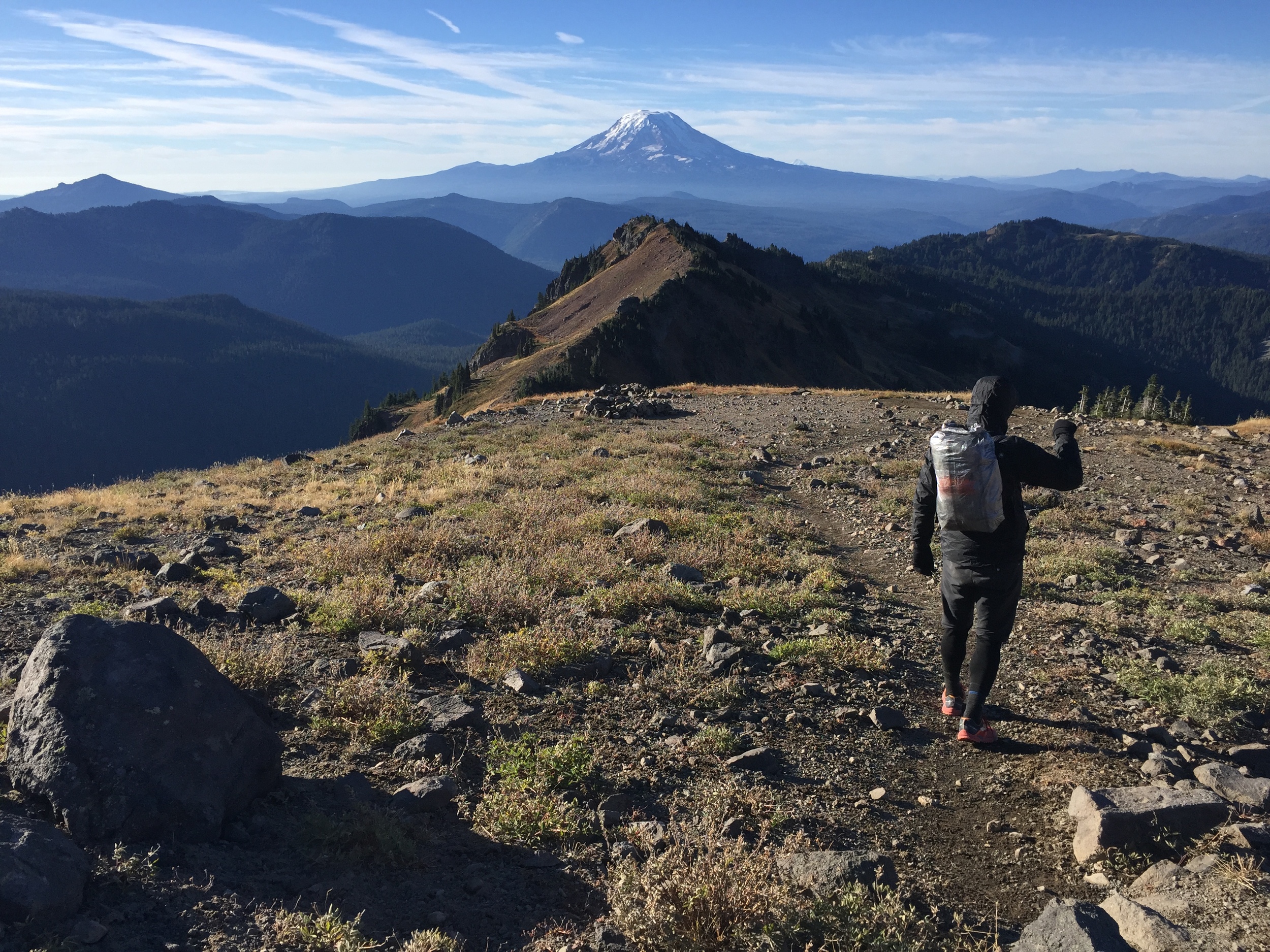

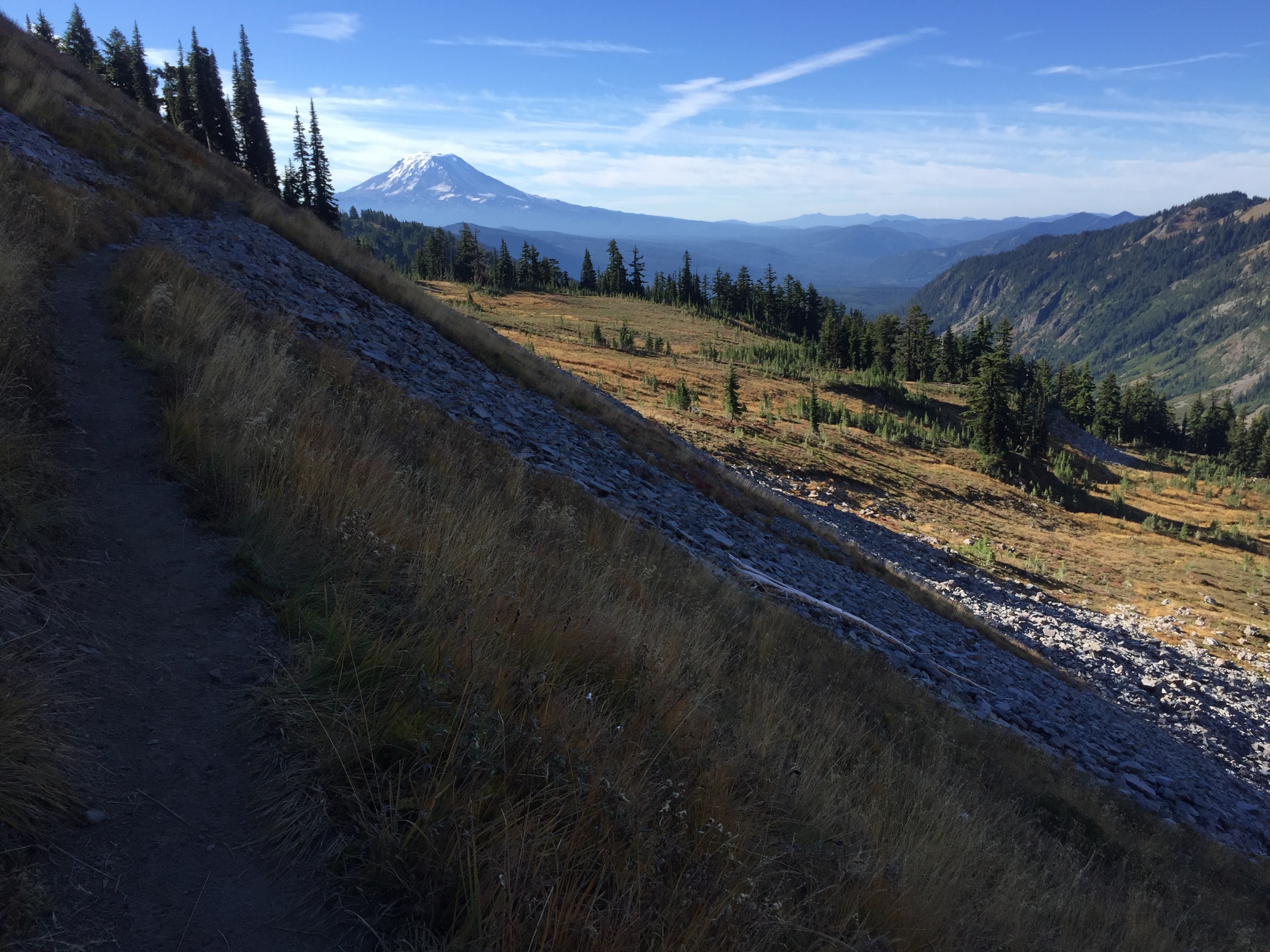
We hiked down and around Goat Lake — a spectacular turquoise pool at the bottom of an alpine rockfall bowl. We traversed by perhaps the best campsite I’ve ever seen, overlooking the Goat Creek canyon, to the PCT, then down the Goat Creek Trail back into the forest toward the trailhead and our bikes.
Adding backpacking to bikepacking was one of the best parts of this trip. You get the the exceptional places that bikes aren’t allowed, but can put in the miles in-between towns that bikes make possible. Our backpacks only weighed 4 oz, and we only took the minimum essentials to live overnight, so our packs were so light that we were able to run some of Goat Creek Trail to get back to the bikes. Dan and I realized that we were smug elitists, but we couldn’t help but shake our heads upon seeing the loads people carried up to Goat Rocks while we literally ran by them with our tiny, 8-lb backpacks. I’m going to find more routes with hiking, as the extra weight of shoes and a backpack only amounted to 19 oz.
We finally made it to the bikes at noon, ate our standard lunch, then hopped on for a 15-mile gravel downhill to the bottom of Babyshoe Pass.
Oh and I realized that I’d lost my dirty water bag on top of Hawkeye Point, so we had to turn my main bag into the dirty bag for filtering - meaning Dan would have to fully fill his water bag and schlep extra water to daddy-bird me the rest of the trip. Luckily it wasn’t much of an issue.
The road that climbs up to Babyshoe doesn’t look like the correct turn: it’s a washed-out 4-wheeler road that doesn’t look like it goes anywhere. But it turned out to be the best road so far. We really lucked out following in the footsteps of the Seattle boys. It was a nice, 6% Cascadian forest road with mossy trees and loamy dirt. Once we crested the summit, we hit a bigger, more-typical gravel road that false-flatted straight toward Mount Adams and babyshoe Pass.
That entire stretch was frankly incredible - alternating from gravel to a paved one-lane with ever-changing views of the volcano, as we skirted its side and beheld its many glaciers. Once in awhile, we’d ride into a drainage straight off a glacier and bust through a river of cold air flowing from a glacier high above.
We finally made it to the sign we’d been looking for: the classic truck going down a steep incline. Ten miles of coasting to Trout Lake and all the food and water we could ever consume.
We had burgers, fries and milkshakes in Trout Lake, then went across to the general store. Trout Lake is a popular PCT through-hiker stop (you still have to hitchhike all the way off the hill and back to get there, but I guess through-hikers do that?) and the general store reflects their tastes with an excellent assortment of overpriced snacks.
We’d been behind schedule since Rainier, and we had to make a tough call in Trout Lake: ride long into the night on my untested route that would definitely be difficult and might go through restricted tribal land, or blaze out of town on the main highway, straight for the Columbia — getting back on track for tomorrow’s difficult ride to Government Camp. We decided to take the fast track — reasoning that it would save us from riding hours into the night that evening and probably the next.
We set out down the highway at sunset and Dan pulled the throttle all the way. I was riding above my pace just to stay on his wheel, and he kept it pinned at 25 mph all the way to the Columbia. We’d planned to poach some roadside greenery we observed from satellite images, but as we blasted into the night it hit me: Syncline! Syncline is a popular mountain bike destination for Portlanders across the Columbia from Hood River. Named after the geological strata, exposed as a massive cliff overlooking the trailhead, all of Syncline’s trails start from an abandoned road overlooking the river. We could easily camp along the abandoned road without any risk of park rangers wielding tickets or ranchers wielding guns. Plus, we’d be close to the Dalles and ahead of schedule for the next day’s tough ride.
We arrived at Syncline about 8:30 at night. I couldn’t believe how great a spot it was! A trail system I’d been to many times, on an abandoned road, 50 feet above a major highway and train line; and it was totally wonderful. The view of the river under an almost-full moon watching freeway traffic a mile away across the river was magical. Plus it wasn’t cold. We were still wearing our shorts and no puffies while we sat and ate an entire bag of Goldfish, checking out Instagram and texting, basking in the glow of civilization and LTE along the Columbia River.
Day 4: The Eternal Climb
We woke up early and hit the road quickly on day four — out of fuel to make coffee and knowing we’d be in the Dalles soon.
Sunrise in the Gorge was just as amazing as it was on Goat Rocks. Why don’t I wake up at sunrise more often? [editor’s note: because I’m looking at the Internet at 12:13 a.m.].
The Old Highway road shepherded us from Syncline to the mouth of the Klickitat, along several placid miles of vineyards bathed in dew and soft morning light. We hit Highway 14 and rode its wide shoulder alongside the Columbia’s main rail route. We saw a funny sign for “Googleville” — hand-painted in Google’s recognizable but now-defunct typeface, so we peeled off to take pictures. Big mistake.
When we started down the road again, we both had multiple goat heads in our tires. I pulled one out, heard air leaking, and poked it back in. That won’t last long.
It didn’t. I had a squishy front as we descended toward the Columbia River and the Dalles Bridge. By the time we hit Oregon, it was nearly flat. We finally stopped in a Les Schwab Tire Center parking lot, of all places, to fix it.
A little backstory: before the Oregon Outback in May, I bought a dynamo hub and light, built up a nice front wheel, and got some new Schwalbe Thunder Burt tires. This setup was the sum total of my experience the year before and would enable me to ride through the night for a two-day Outback (or so I thought). The only problem with this setup was that the tire was so tight on the Stans rim that I had to use a tire jack to get it on. My mechanic said, “if you get a flat, you’re gonna be fucked.” But I totally got away with it. Until that moment.
The tire wasn’t as hard to get off as I’d feared, but it was clearly not possible to put it back on without using a lever. I levered one on, pumped it, it was punctured.
I patched it again — fast, shabby, no sanding, hardly any waiting — and jammed it back in. I hastily wrenched the tire back on with the lever, assuming I’d pierce it again, and pumped it. It held. Dan insisted on re-patching my last shitty patch. All of this took us 45 minutes, and we finally rode into the Dalles at about 11.
Dan and I argued about where to eat. I wanted to stay in the cute, old, main street area, while Dan wanted to go to the place most highly-recommended on Google. I got my way, except my place was closed or full or something, so we went to Dan’s pick. They had an unlimited pancake breakfast. It was the right choice.
We were there forever, continually walking our stinking bodies through the tables to use and reuse the bathroom. I got a call from a recruiter about a job and talked to her for a long time, while Dan pushed the limits of the unlimited pancake offer.
We finally got our groceries for the day — packing light for the 6,000-foot climb ahead — took a left to go uphill away from the river, and climbed Skyline all the way out of the Gorge, up the sloping scrublands above, up the forested foothills of Mount Hood, up the gravel roads around 8-Mile, up the steep jeep road to High Prairie at 6,000 feet.
I fell apart on the climb, both physically and emotionally. Being slower than Dan for four days took its toll and, once combined with hunger, produced an enduring antipathy that compelled me to fabricate arguments and imagine dressings-down about how he was a shitty touring partner.
I finally snapped during one of Dan’s wait-and-ride-then-slowly-ride-aways.
“Are you gonna ride with me or just keep riding away? I see how you’re fucking riding!”
“Woah, woah, woah, dogg. I’m riding the same and you’re just slowing down. Are you sure you’re ok?”
“I don’t know, man. I’m just losing my shit, seeing you ride next to me, then just hammering away.”
“You need to eat, man. I think you’re bonking.”
Dan’s pretty good at de-escalating an argument (with me, at least). Offering a, “here. Eat. You’re bonking” olive branch was just what i needed. Yes. I’m bonking. that’s why I’m so slow. And angry. I should eat.
We rode together the rest of the day, both flatting on the descent off High Prairie. Luckily my front tire was loosened up by all the stretching earlier that day, so I got a tube in and wrenched it back on with only my hands. We committed to riding slowly down the rocky Gunsight Ridge and Bennett Pass descents — calculating that it would be much faster than fixing another flat.
We finally made it to the end of Gunsight Ridge at sunset, and the big jeep road descent to Bennett Pass and the highway below. The descent was so spectacular that I finally said, “I’m sorry I was a negative asshole earlier.” Dan said, “I’m sorry I was an asshole too.” “That’s not what this trip should be about,” I said. That was the end of our fighting.
We cruised the 8 or so miles of mostly-downhill highway in the dark and rolled into Government Camp at 8 p.m. The town was dead — summer skiing on Mount Hood’s glacier above done for the season, summer tourism over, and the ski season months away. We went to a 24-hour diner that appeared paused in a permanent 2 a.m. in the year 1998 (except for their outlandish pie prices). Sort of an Oregonian ski town version of Twede’s Cafe from Twin Peaks.
I ate a Reuben but decided against the pie as my proximity to Portland was reminding me that I was unemployed, broke, and “making bad financial decisions” at all times during this tour.
The sweet, old waitress came around asking if we wanted dessert. Fuck it, I’ll have the pie.
We rode back the way we came half a mile out of town to get to Still Creek Campground where we decided to just set up at a legitimate site instead of continuing down the road, searching for a bootlegger.
One fire shone and a drunken voice yelled, “you can camp down here.”
Dan responded with something along the lines of, “thanks. We’re ok up here.”
At 2 a.m. I awoke to the throbbing sounds of EDM music and saw a man not far away smoking a cigarette while standing in his car’s headlights. This really creeped me out and I sifted through my belongings to find my tiny pocket knife. My mood switched from fear to anger when I heard that he had a female friend cackling with him. I got up slyly and hid behind a tree to take a piss. I considered yelling at them to shut the fuck up, but felt pretty vulnerable with our ultra-minimal setups compared to them with their car and bottles and huge tent.
Whatever, I went to sleep eventually.
Day Five: Back to Reality
When we awoke at 7, it was immediately clear why the couple woke me up in the middle of the night: they were parked at the next site over from ours, perhaps 45 feet away. I complaining to Dan louder than necessary about the “assholes next door” as we packed up — hoping to get in a cheap little jab to stick them while they were cold and hung over.
We flew down Still Creek Road — the last truly great road of the tour and also the coldest. Dan got a flat, a slow leak, but didn’t want to tell me until we got to the bottom. He admitted it once it went nearly flat, and we pumped it up super high to get us to Zigzag. Still Creek spat us out on Highway 26 and we pedaled a mile or so to the Zig Zag Cafe — a place where I’d enjoyed biscuits and gravy not long before after camping on Lolo Pass.
The waitress was walking around apologizing profusely to everyone. as she brought us more coffee and water.
“I’m so sorry about the wait. We have a new cook and he, well, he’s having some issues.”
The new cook was an older, steel-faced West American logging town type — his face chiseled into a fortress of forehead wrinkles, small slits of eyes, and a dignified scowl that protected him from the deep shame of a life that hadn’t turned out quite right.
“I’m not a doctor,” he said to the waitress. “Am I supposed to know what you need without you asking?” She responded in hushed tones and he quieted down a bit himself so we couldn’t hear.
“Well you didn’t set yourself up for success!” she yelled.
“I don’t want to continue to do this little game,” he said. “I could walk out right now.”
She tried to calm him down.
“I’m going outside.”
I assumed that was the last we’d see of the new cook, but he just went outside and lit up a cigarette on the bench out front. Our waitress returned to our table.
“So, we had to replace our cook and we apparently got someone who can’t cook. So if you want to wait, I’m gonna get back there and try to do my best to make you something for breakfast. But I can’t promise it’ll be that great.”
“Oh I’m sure we’ll eat anything you’ve got,” we said. “No problem at all. We really appreciate it.” In a way, we were on the old man’s side, but we didn’t want to let on to the waitress.
Much time passed, and the new cook came back in and resumed his silent but unceasing work around the kitchen as the waitress cooked without talking to him. I’m not sure what he was doing, but he was well beyond her orders at this point.
Our food came and she gushed more apologies and warnings.
“If it’s not edible, you just let me know, ok?”
It was phenomenal — the best meal of the entire trip. She was totally full of shit; she could cook.
Halfway through our meal, a couple came in and the waitress stopped them at the door.
“I’m sorry. We had to close early. We’ll be open again tomorrow. Sorry.”
Dan and I were the last two left, so we slammed another cup and got out of there. As we left, the new cook was still walking purposefully around the kitchen, cleaning this and that, opening one drawer and moving something into another. The waitress left shortly after us, and the new cook stayed there, dutifully shining objects and moving them around.
I knew we were going to make it home with time to spare, once we got Dan’s flat fixed and hit the road toward Little Switzerland, then the farms and the Springwater Trail to Portland. I’d ridden all those roads so many times.
Dan was loving it all — so overgrown and different from Colorado, even if it was about as dry as it gets. But my head was filling back up with the responsibilities I’d fucked up, the resentments I had against the people who hired me, then laid me off. I felt like I was turning into that old steel-faced cook who didn’t know how to cook: too proud to admit defeat and blowing the rest of my money like nothing was wrong.
But for 4.5 days, nothing was wrong. And 10,000 years from now, no one will care if I sat at my computer that entire time and refreshed my inbox, waiting to schedule a job interview. But they might find this very long blog post archived somewhere, translated into their future-alien language and they might be surprised by its ending.
Dear aliens,
On behalf of humankind, I am sorry that we ruined planet Earth. I wasn't able to see much of it myself, during my short life, but what I did see was amazing. Also, if it hasn't been invented yet, you should totally make a bike that converts from a road bike to a mountain bike with the flip of a switch. Or with, like, mind rays.
[editor's note: I got a WAY better job shortly after this tour. As for the girl stuff.. I'll update you a little later.]
















